

Case Studies That Define Mechanical Engineering Challenges
- Mechanical Engineering
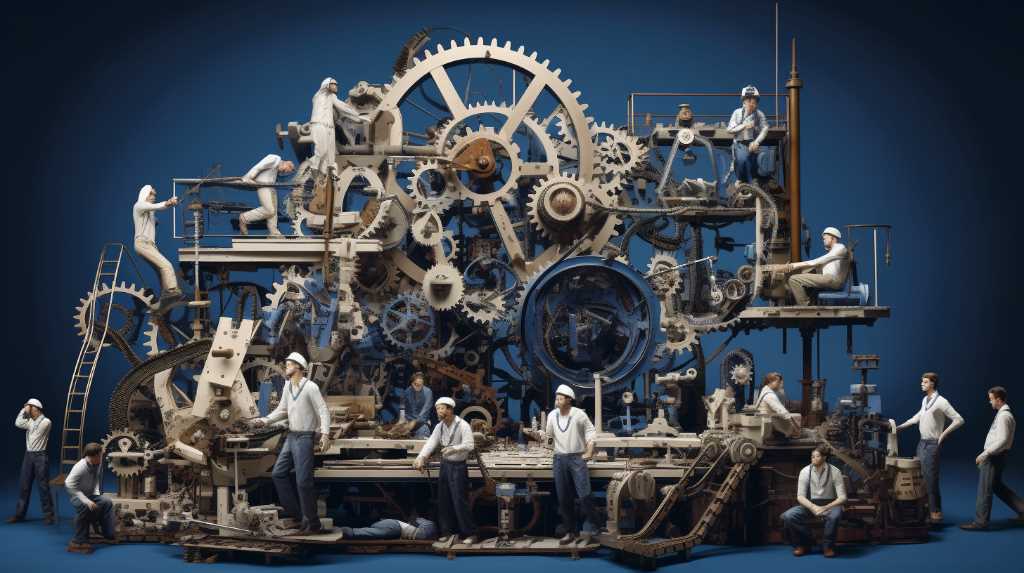
Mechanical engineering is key in creating and perfecting the machines and systems we rely on every day. To truly grasp its complex challenges, it’s useful to look at detailed case studies.
These studies not only show how engineering works but also highlight why keeping people safe, coming up with new ideas, and making ethical choices matter so much.
Let’s explore some major events that tested mechanical engineering. We’ll look at the fix of the Hubble Space Telescope, how Mars Rovers were made to move on another planet, why the Tacoma Narrows Bridge fell apart, the nuclear crisis at Fukushima Daiichi, and the massive oil spill from Deepwater Horizon.
Each story breaks down how mechanical engineering played a role and what we can take away from these incidents to prevent future mistakes and guide new breakthroughs in the field.
The Hubble Space Telescope Repair
Mechanical engineers faced tough problems when fixing the Hubble Space Telescope. To tackle these, they combined deep knowledge with creative thinking. They carefully checked the telescope’s parts to find what was broken.
Then, they came up with special tools and steps for the astronauts to fix the telescope in space, where conditions are very difficult. They used a method called finite element analysis to make sure the telescope would be strong enough after the repairs, and they made sure that new parts could be swapped in easily.
Their detailed planning and work didn’t just get Hubble working again; it also made sure the telescope could keep working for a longer time. This shows how important mechanical engineering is in solving tough problems with machinery in space.
Mars Rover Mobility Dilemmas
Building Mars rovers is a tough job for mechanical engineers. They have to make sure these rovers can move smoothly over Mars, which has a very rough surface with lots of rocks, sand, and big hills. Engineers work with advanced robot technology, new types of materials, and knowledge about other planets to solve these problems.
They test their designs over and over to see how the rover parts will handle the ground on Mars. The parts have to be really strong and not wear out quickly, even when they hit unexpected bumps.
Also, the rovers need smart computer systems that can figure out the lay of the land by themselves and change their path to avoid getting stuck or broken. This is super important because if something goes wrong with the rover, it could mess up the whole mission to Mars.
Tacoma Narrows Bridge Collapse
The Tacoma Narrows Bridge collapse is a key example for mechanical engineers of why it’s essential to consider how wind affects bridges. When the bridge fell apart in 1940, it showed that suspension bridges can swing and twist dangerously in the wind.
The bridge’s narrow shape, the solid pieces it was made of, and not enough side support were big reasons why it moved so much and then broke. This disaster made it clear that testing bridges in wind tunnels was necessary.
As a result, bridge design changed a lot. Engineers started using special devices to stop bridges from swinging too much and created stronger design rules. These changes help make sure that big bridges can stand up to wind without getting damaged.
Fukushima Daiichi Nuclear Disaster
The Fukushima Daiichi nuclear disaster is a crucial lesson in the need for strong and reliable engineering. On March 11, 2011, a huge earthquake, with a strength of 9.0, shook Japan and caused a major failure at the Fukushima Daiichi Nuclear Power Plant. This event showed how important it is for machines and structures to be able to survive natural disasters like earthquakes and tsunamis.
After the earthquake, a tsunami followed, which made things even worse. The power plant lost power, which meant the cooling systems for three of its reactors stopped working. Without cooling, these reactors overheated and their cores melted down. This was a tragic example of what can go wrong when we don’t carefully think about the risks of building in areas where natural disasters can happen.
Later on, experts looked at what went wrong and found that the power plant wasn’t built to handle a tsunami of that size, and the emergency plans weren’t good enough for such a disaster. Now, the Fukushima disaster is a key example that engineers study. It shows the link between planning ahead, considering the environment, and the serious problems that can happen if we don’t.
Deepwater Horizon Oil Spill Engineering
In April 2010, the Deepwater Horizon oil rig failed disastrously, causing a huge oil spill in the ocean. This event was significant because it showed how much we needed to improve our deep-sea drilling technology and how we respond to such disasters. Engineers had to look closely at how they build and check the safety of underwater equipment, such as blowout preventers, which are supposed to stop leaks. They also needed to make sure oil wells were designed to be very strong and could handle emergencies.
The spill made it clear that we must do better at predicting risks, watching over drilling as it happens, and creating tools that can handle the tough conditions at the bottom of the sea. After the spill, experts worked on making better plans for how to deal with such problems, which included using more advanced robots that can work underwater and creating better ways to quickly block leaking oil wells.
Engineers learned a lot from what happened with the Deepwater Horizon. They are using those lessons to try to make drilling in deep water safer, to reduce the chance of another big oil spill. This means continuing to develop new technology and safety measures that can prevent or quickly stop leaks if they do happen.
In summary, every case study shows different problems that mechanical engineers have to deal with.
For example, fixing the Hubble Space Telescope needed very accurate work, and getting the Mars Rover to move on Mars took a lot of creativity.
The fall of the Tacoma Narrows Bridge and the nuclear accident at Fukushima Daiichi teach us that strong design and having a backup plan are very important.
The oil spill at Deepwater Horizon reminds us that safety features and thinking about the environment are essential.
These examples show that mechanical engineering involves many different areas and that it’s important to keep coming up with new ideas and to watch out for possible risks.
Related Posts
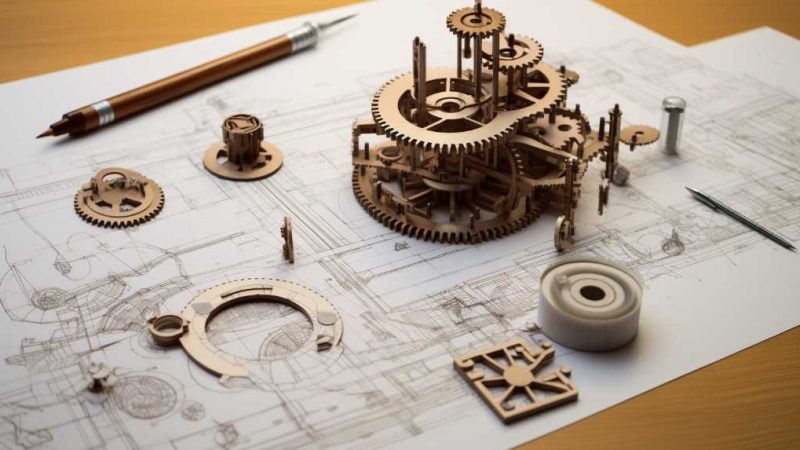
Innovative Mini Project Ideas for Mechanical Engineering Students
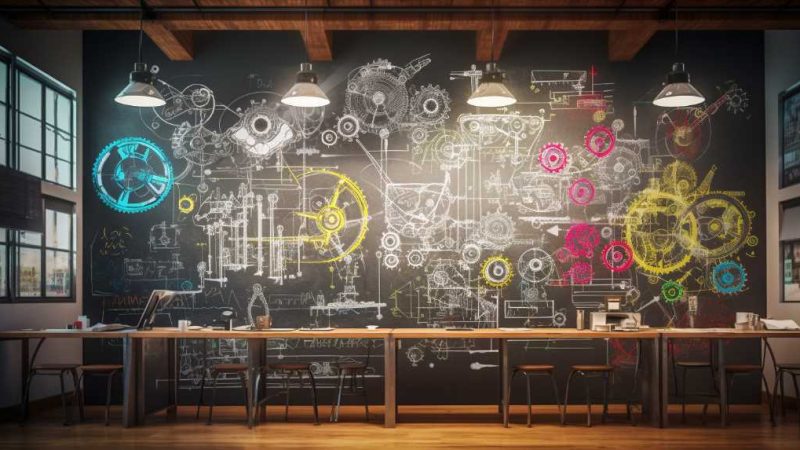
- Engineering Degree
Essential Subjects You Need for a Mechanical Engineering Degree
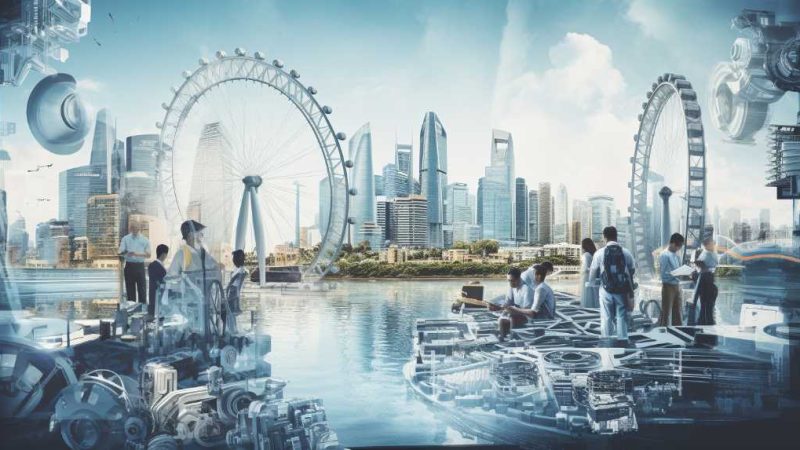
Singapore’s Mechanical Engineering Course Landscape

Discovering Where Mechanical Engineering Jobs Are Located

Canada’s Elite Mechanical Engineering Universities
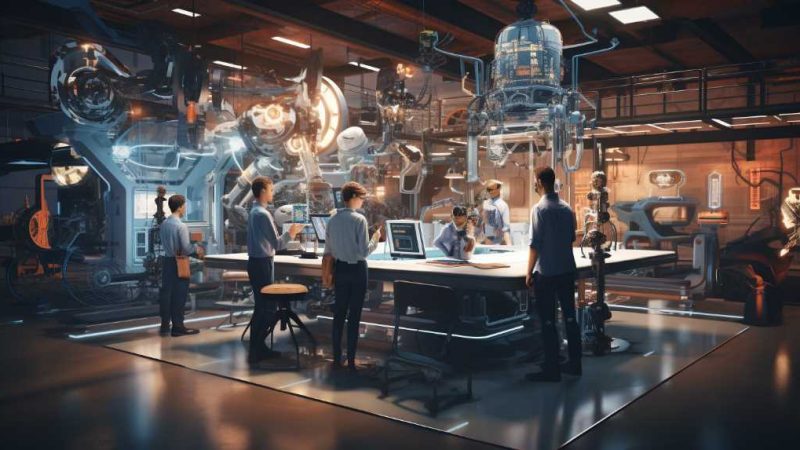
- Engineering Career
Exploring Careers in Mechanical Engineering
Top 150 Mechanical Engineering Research Topics [Updated]
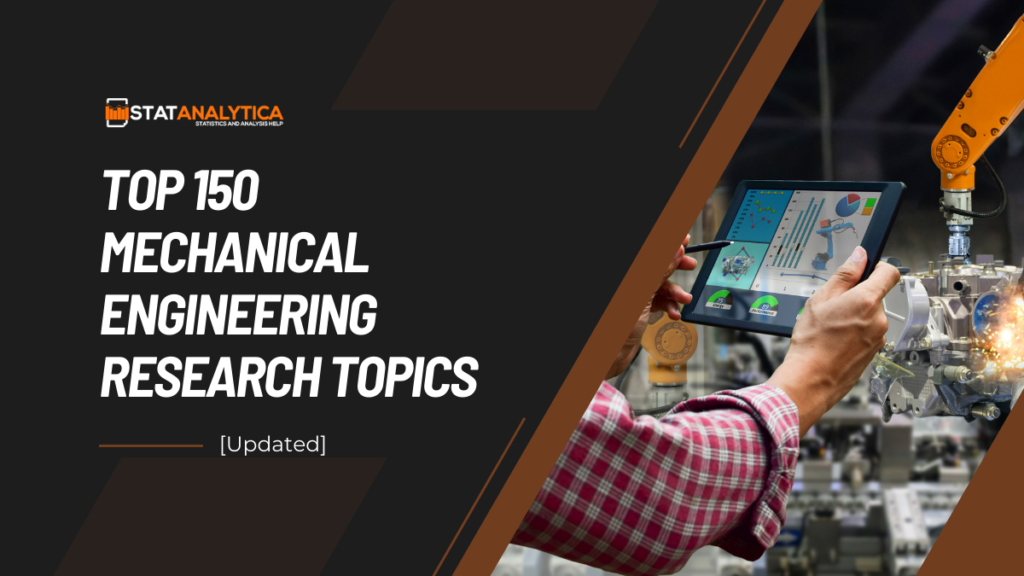
Mechanical engineering is an intriguing discipline that holds significant sway in shaping our world. With a focus on crafting inventive machinery and fostering sustainable energy initiatives, mechanical engineers stand as pioneers in driving technological progress. However, to make meaningful contributions to the field, researchers must carefully choose their topics of study. In this blog, we’ll delve into various mechanical engineering research topics, ranging from fundamental principles to emerging trends and interdisciplinary applications.
How to Select Mechanical Engineering Research Topics?
Table of Contents
Selecting the right mechanical engineering research topics is crucial for driving impactful innovation and addressing pressing challenges. Here’s a step-by-step guide to help you choose the best research topics:
- Identify Your Interests: Start by considering your passions and areas of expertise within mechanical engineering. What topics excite you the most? Choosing a subject that aligns with your interests will keep you motivated throughout the research process.
- Assess Current Trends: Stay updated on the latest developments and trends in mechanical engineering. Look for emerging technologies, pressing industry challenges, and areas with significant research gaps. These trends can guide you towards relevant and timely research topics.
- Conduct Literature Review: Dive into existing literature and research papers within your field of interest. Identify gaps in knowledge, unanswered questions, or areas that warrant further investigation. Building upon existing research can lead to more impactful contributions to the field.
- Consider Practical Applications: Evaluate the practical implications of potential research topics. How will your research address real-world problems or benefit society? Choosing topics with tangible applications can increase the relevance and impact of your research outcomes.
- Consult with Advisors and Peers: Seek guidance from experienced mentors, advisors, or peers in the field of mechanical engineering. Discuss your research interests and potential topics with them to gain valuable insights and feedback. Their expertise can help you refine your ideas and select the most promising topics.
- Define Research Objectives: Clearly define the objectives and scope of your research. What specific questions do you aim to answer or problems do you intend to solve? Establishing clear research goals will guide your topic selection process and keep your project focused.
- Consider Resources and Constraints: Take into account the resources, expertise, and time available for your research. Choose topics that are feasible within your constraints and align with your available resources. Balancing ambition with practicality is essential for successful research endeavors.
- Brainstorm and Narrow Down Options: Generate a list of potential research topics through brainstorming and exploration. Narrow down your options based on criteria such as relevance, feasibility, and alignment with your interests and goals. Choose the most promising topics that offer ample opportunities for exploration and discovery.
- Seek Feedback and Refinement: Once you’ve identified potential research topics, seek feedback from colleagues, advisors, or experts in the field. Refine your ideas based on their input and suggestions. Iteratively refining your topic selection process will lead to a more robust and well-defined research proposal.
- Stay Flexible and Open-Minded: Remain open to new ideas and opportunities as you progress through the research process. Be willing to adjust your research topic or direction based on new insights, challenges, or discoveries. Flexibility and adaptability are key qualities for successful research endeavors in mechanical engineering.
By following these steps and considering various factors, you can effectively select mechanical engineering research topics that align with your interests, goals, and the needs of the field.
Top 50 Mechanical Engineering Research Topics For Beginners
- Analysis of the efficiency of different heat exchanger designs.
- Optimization of airfoil shapes for enhanced aerodynamic performance.
- Investigation of renewable energy harvesting using piezoelectric materials.
- Development of smart materials for adaptive structures in aerospace applications.
- Study of vibration damping techniques for improving vehicle ride comfort.
- Design and optimization of suspension systems for off-road vehicles.
- Analysis of fluid flow characteristics in microchannels for cooling electronics.
- Evaluation of the performance of different brake systems in automotive vehicles.
- Development of lightweight materials for automotive and aerospace industries.
- Investigation of the effects of friction stir welding parameters on joint properties.
- Design and testing of a small-scale wind turbine for rural electrification.
- Study of the dynamics of flexible multibody systems in robotics.
- Development of a low-cost prosthetic limb using 3D printing technology.
- Analysis of heat transfer in electronic packaging for thermal management.
- Investigation of energy harvesting from vehicle suspension systems.
- Design and optimization of heat sinks for electronic cooling applications.
- Study of material degradation in composite structures under various loading conditions.
- Development of bio-inspired robotic mechanisms for locomotion.
- Investigation of the performance of regenerative braking systems in electric vehicles.
- Design and analysis of an autonomous agricultural robot for crop monitoring.
- Optimization of gas turbine blade profiles for improved efficiency.
- Study of the aerodynamics of animal-inspired flying robots (bio-drones).
- Development of advanced control algorithms for robotic manipulators.
- Analysis of wear mechanisms in mechanical components under different operating conditions.
- Investigation of the efficiency of solar water heating systems.
- Design and optimization of microfluidic devices for biomedical applications.
- Study of the effects of additive manufacturing parameters on part quality.
- Development of assistive devices for individuals with disabilities.
- Analysis of the performance of different types of bearings in rotating machinery.
- Investigation of the feasibility of using shape memory alloys in actuator systems.
- Design and optimization of a compact heat exchanger for space applications.
- Study of the effects of surface roughness on friction and wear in sliding contacts.
- Development of energy-efficient HVAC systems for buildings.
- Analysis of the performance of different types of fuel cells for power generation.
- Investigation of the feasibility of using biofuels in internal combustion engines.
- Design and testing of a micro-scale combustion engine for portable power generation.
- Study of the mechanics of soft materials for biomedical applications.
- Development of exoskeletons for rehabilitation and assistance in mobility.
- Analysis of the effects of vehicle aerodynamics on fuel consumption.
- Investigation of the potential of ocean wave energy harvesting technologies.
- Design and optimization of energy-efficient refrigeration systems.
- Study of the dynamics of flexible structures subjected to dynamic loads.
- Development of sensors and actuators for structural health monitoring.
- Analysis of the performance of different cooling techniques in electronics.
- Investigation of the potential of hydrogen fuel cells for automotive applications.
- Design and testing of a small-scale hydroelectric power generator.
- Study of the mechanics of cellular materials for impact absorption.
- Development of unmanned aerial vehicles (drones) for environmental monitoring.
- Analysis of the efficiency of different propulsion systems in space exploration.
- Investigation of the potential of micro-scale energy harvesting technologies for powering wireless sensors.
Top 50 Mechanical Engineering Research Topics For Intermediate
- Optimization of heat exchanger designs for enhanced energy efficiency.
- Investigating the effects of surface roughness on fluid flow in microchannels.
- Development of lightweight materials for automotive applications.
- Modeling and simulation of combustion processes in internal combustion engines.
- Design and analysis of novel wind turbine blade configurations.
- Study of advanced control strategies for unmanned aerial vehicles (UAVs).
- Analysis of wear and friction in mechanical components under varying operating conditions.
- Investigation of thermal management techniques for high-power electronic devices.
- Development of smart materials for shape memory alloys in actuator applications.
- Design and fabrication of microelectromechanical systems (MEMS) for biomedical applications.
- Optimization of additive manufacturing processes for metal 3D printing.
- Study of fluid-structure interaction in flexible marine structures.
- Analysis of fatigue behavior in composite materials for aerospace applications.
- Development of energy harvesting technologies for sustainable power generation.
- Investigation of bio-inspired robotics for locomotion in challenging environments.
- Study of human factors in the design of ergonomic workstations.
- Design and control of soft robots for delicate manipulation tasks.
- Development of advanced sensor technologies for condition monitoring in rotating machinery.
- Analysis of aerodynamic performance in hypersonic flight vehicles.
- Study of regenerative braking systems for electric vehicles.
- Optimization of cooling systems for high-performance computing (HPC) applications.
- Investigation of fluid dynamics in microfluidic devices for lab-on-a-chip applications.
- Design and optimization of passive and active vibration control systems.
- Analysis of heat transfer mechanisms in nanofluids for thermal management.
- Development of energy-efficient HVAC (heating, ventilation, and air conditioning) systems.
- Study of biomimetic design principles for robotic grippers and manipulators.
- Investigation of hydrodynamic performance in marine propeller designs.
- Development of autonomous agricultural robots for precision farming.
- Analysis of wind-induced vibrations in tall buildings and bridges.
- Optimization of material properties for additive manufacturing of aerospace components.
- Study of renewable energy integration in smart grid systems.
- Investigation of fracture mechanics in brittle materials for structural integrity assessment.
- Development of wearable sensors for human motion tracking and biomechanical analysis.
- Analysis of combustion instability in gas turbine engines.
- Optimization of thermal insulation materials for building energy efficiency.
- Study of fluid-structure interaction in flexible wing designs for unmanned aerial vehicles.
- Investigation of heat transfer enhancement techniques in heat exchanger surfaces.
- Development of microscale actuators for micro-robotic systems.
- Analysis of energy storage technologies for grid-scale applications.
- Optimization of manufacturing processes for lightweight automotive structures.
- Study of tribological behavior in lubricated mechanical systems.
- Investigation of fault detection and diagnosis techniques for industrial machinery.
- Development of biodegradable materials for sustainable packaging applications.
- Analysis of heat transfer in porous media for thermal energy storage.
- Optimization of control strategies for robotic manipulation tasks in uncertain environments.
- Study of fluid dynamics in fuel cell systems for renewable energy conversion.
- Investigation of fatigue crack propagation in metallic alloys.
- Development of energy-efficient propulsion systems for unmanned underwater vehicles (UUVs).
- Analysis of airflow patterns in natural ventilation systems for buildings.
- Optimization of material selection for additive manufacturing of biomedical implants.
Top 50 Mechanical Engineering Research Topics For Advanced
- Development of advanced materials for high-temperature applications
- Optimization of heat exchanger design using computational fluid dynamics (CFD)
- Control strategies for enhancing the performance of micro-scale heat transfer devices
- Multi-physics modeling and simulation of thermoelastic damping in MEMS/NEMS devices
- Design and analysis of next-generation turbofan engines for aircraft propulsion
- Investigation of advanced cooling techniques for electronic devices in harsh environments
- Development of novel nanomaterials for efficient energy conversion and storage
- Optimization of piezoelectric energy harvesting systems for powering wireless sensor networks
- Investigation of microscale heat transfer phenomena in advanced cooling technologies
- Design and optimization of advanced composite materials for aerospace applications
- Development of bio-inspired materials for impact-resistant structures
- Exploration of advanced manufacturing techniques for producing complex geometries in aerospace components
- Integration of artificial intelligence algorithms for predictive maintenance in rotating machinery
- Design and optimization of advanced robotics systems for industrial automation
- Investigation of friction and wear behavior in advanced lubricants for high-speed applications
- Development of smart materials for adaptive structures and morphing aircraft wings
- Exploration of advanced control strategies for active vibration damping in mechanical systems
- Design and analysis of advanced wind turbine blade designs for improved energy capture
- Investigation of thermal management solutions for electric vehicle batteries
- Development of advanced sensors for real-time monitoring of structural health in civil infrastructure
- Optimization of additive manufacturing processes for producing high-performance metallic components
- Investigation of advanced corrosion-resistant coatings for marine applications
- Design and analysis of advanced hydraulic systems for heavy-duty machinery
- Exploration of advanced filtration technologies for water purification and wastewater treatment
- Development of advanced prosthetic limbs with biomimetic functionalities
- Investigation of microscale fluid flow phenomena in lab-on-a-chip devices for medical diagnostics
- Optimization of heat transfer in microscale heat exchangers for cooling electronics
- Development of advanced energy-efficient HVAC systems for buildings
- Exploration of advanced propulsion systems for space exploration missions
- Investigation of advanced control algorithms for autonomous vehicles in complex environments
- Development of advanced surgical robots for minimally invasive procedures
- Optimization of advanced suspension systems for improving vehicle ride comfort and handling
- Investigation of advanced materials for 3D printing in aerospace manufacturing
- Development of advanced thermal barrier coatings for gas turbine engines
- Exploration of advanced wear-resistant coatings for cutting tools in machining applications
- Investigation of advanced nanofluids for enhanced heat transfer in cooling applications
- Development of advanced biomaterials for tissue engineering and regenerative medicine
- Exploration of advanced actuators for soft robotics applications
- Investigation of advanced energy storage systems for grid-scale applications
- Development of advanced rehabilitation devices for individuals with mobility impairments
- Exploration of advanced materials for earthquake-resistant building structures
- Investigation of advanced aerodynamic concepts for reducing drag and improving fuel efficiency in vehicles
- Development of advanced microelectromechanical systems (MEMS) for biomedical applications
- Exploration of advanced control strategies for unmanned aerial vehicles (UAVs)
- Investigation of advanced materials for lightweight armor systems
- Development of advanced prosthetic interfaces for improving user comfort and functionality
- Exploration of advanced algorithms for autonomous navigation of underwater vehicles
- Investigation of advanced sensors for detecting and monitoring air pollution
- Development of advanced energy harvesting systems for powering wireless sensor networks
- Exploration of advanced concepts for next-generation space propulsion systems.
Mechanical engineering research encompasses a wide range of topics, from fundamental principles to cutting-edge technologies and interdisciplinary applications. By choosing the right mechanical engineering research topics and addressing key challenges, researchers can contribute to advancements in various industries and address pressing global issues. As we look to the future, the possibilities for innovation and discovery in mechanical engineering are endless, offering exciting opportunities to shape a better world for generations to come.
Related Posts

Step by Step Guide on The Best Way to Finance Car

The Best Way on How to Get Fund For Business to Grow it Efficiently
Case Studies
- Analysis of a Diesel Engine
- Experimental Determination of the Mechanical Equivalent of Heat
- Refining the Mechanical Equivalent of Heat
- Analysis of a Residential Heat Pump
Ethics Case Studies
- Mount Dioxin
- Calculating and Comparing the Output Power and the Indicated Power of a Simple IC Engine
- Comparison of the Anemometer Mass Flow and the Thermal Mass Flow
- Calculating Q (Heat)
- Drag Measurements for Ten Geometric Bodies
- Drag Measurements on Round and Wing Tubes
- Hydraulic Jump through a Sluice Gate
- Optimal Drafting Position for Marathon Runner
- Experiments on a Series of Symmetrical Joukowski Sections
- Nusselt Number Correlation
- Heat Transfer in a Triangular Duct
- Nuclear Plant Heat Exchanger Problems
- Torsional Pendulum: Determining Mass Moments of Inertia
- Space Crank Application
- The Story of Eighty-Four Minutes
- Bolt Torque, Preload, and Strength
- The Problem of the Perverse Pinion
- Hunting Problems on a Dam Controlled Gate
Welcome to the Mechanical Engineering Case Studies website. Select your course from the list at the Left to begin.
This web site is being developed to give undergraduate Mechanical Engineering students real engineering examples and experimental data in their lecture courses. This is done by using design calculations or experimental data completed by ME seniors in their design courses, lab courses, honors thesis, and Co-op (with permission from the company). Results from graduate student research or published experimental data are also used. This allows students to become familiar with data analysis and the inherent uncertainties in experimental measurements before entering the laboratory courses.
The case studies are formatted as a homework assignment. In some cases, the entire case study would be assigned for homework. In other cases, there are several similar sets of data and only one set of data would be assigned for homework. Each case study includes a description of the objectives, the experimental facility, and the experimental procedure used to obtain the data. When possible, photos and video clips are used to show the facility and experimental procedure. From the web site, students can download engineering drawings of the models used in the experiment and spreadsheets containing the experimental data. The web site describes the data analysis required in the assignment. Included in the data analysis may be nondimensionalization, statistical analysis, plotting the experimental data, and comparison of the experimental results with correlations found in the text.
In this case study web site you will also find several ethics case studies and several links that have been found for particular classes. A statistics tutorial gives a review of the statistical analysis that is used in several case studies.
If you are interested in contributing additional case studies, or have any comments or suggestions regarding this site, please contact Professor Laura Pauley ( [email protected] ).
Welcome to the Statistics Tutorial. To learn more about a statistical function, click on one of the links below.
- Variance and Standard Deviation
- Binomial Distribution
- Poisson Distribution
- Normal Distribution
- Student's T Distribution
- Chi-Square Test
Case Study use in Mechanical Engineering Design Workshop - ME 380
Case implementation storyboard in me 380, case background.
The Dalsa Harmony Camera Body Part Design case study was developed in 2013 and intended for use in Mechanical Engineering and System Design courses covering topics such as design, manufacturing and heat transfer. The scope and specific topics covered by the case study are broader than the base material taught in the targeted courses. The case documents the design of a camera cover, the parts fabrication process, and a heat sink thermal analysis by Teledyne Dalsa Engineers and University of Waterloo coop student.
The Harmony camera body part design is based on Dalsa’s existing camera and specifically targets reduced production costs with comparable performance, scalable component architecture and lower bill of materials (BOM) costs. The project design focuses on the camera assembly, specifically reducing fabrication costs of the Harmony camera body components (H-Section, a 3D printed model of which is shown in Figure 1) while maintaining adequate heat transfer performance. The H-section is the structural housing to which key electronic components are attached, and it transfers heat away from these components via an internal heat sink bridge. In the existing camera, the H-section is manufactured from billet aluminum. A more cost-effective solution was desired for the Harmony camera.
In ME 380, the student used Design for Manufacture and Assembly (DFMA) methodology to simplify Harmony camera mechanical parts in terms of minimizing the number of parts, and minimizing the time and therefore costs of the assembly process. The case solution modules also cover topics in material selection and cost estimation, presenting trade-off decisions for alternate designs. Case materials include the case study itself, solution modules, teaching note and presentations.
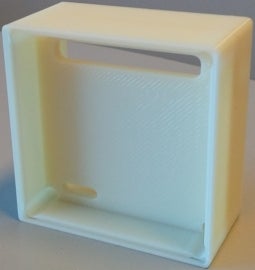
Course Description
The case was used in the mechanical engineering design course (ME 380 - Engineering Design Workshop) in fall 2013 to instruct 87 students. The course consisted of both lectures and other case study analyses. During the lectures, the topics in the competency material were discussed. That formed the basis for the discussion of the case studies by student teams during case delivery.
The course (ME 380) is a third year design project core course. The Dalsa case was used to emphasize design for manufacturing concepts and provide a real-world application of manufacturing process analysis and cost estimation during product design. Students were provided with a sample 3D printed version of the mechanical part, Figure 2. The Dalsa Harmony Camera Design case study was assigned during the last week of the term after covering the needed theoretical concepts in the course.
Preparation
The case and individual assignments were provided to the students one week in advance of the implementation date, after an introductory lecture on DFMA. During the individual assignment phase, questions were designed mainly to demonstrate students’ ability to use appropriate knowledge and skills to: identify, formulate, analyze and develop substantiated solutions to a real-world problem. The students worked individually and in teams to analyze the problem and come up with their own recommendations about the manufacturing process and estimated cost. Often, individual study and preparation are followed by small group discussions, either in or outside of class. In this implementation, the class instructor (Nespoli) presented the case.
The class presentation focused on addressing most of the questions given to the students as part of their individual preparation assignments. Students were assigned to a team of 4 people and asked to discuss their individual answers in these teams in class, spending roughly 10 minutes on each question. The small group discussions facilitated the development of the students’ ability to verbally communicate complex engineering concepts to group members. As part of the small group discussions, a number of different manufacturing methods for the H-section were suggested and discussed in class.
Student Reaction
At the end of the case study in ME 380, students were asked to complete a feedback survey; 81 of 87 students responded. They were asked to respond to 5 questions on a Likert scale, from 1 (strongly disagree) to 5 (strongly agree). Figure 3 shows the student response to question 1: This case study was an engaging application of these specific course topics . The majority of students either agreed or strongly agreed with this statement. Engagement is a strong prerequisite for learning, and case studies provide a real-world application of course topics which students respond to. When asked to expand on their responses, students most often cited the strong fit between the case study and the course material. The numerical average of the student responses for this question was 4.3.
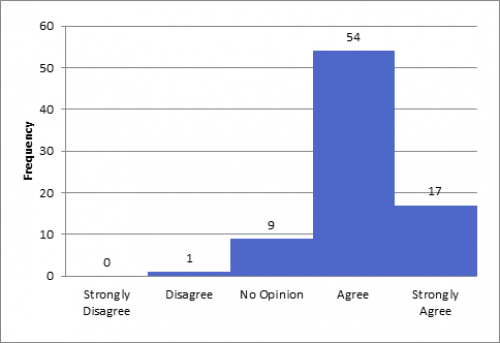
Question 2 further explored the connection between the case and the course material: This case study improved my appreciation for the relevance of these specific course topics . Similar results were obtained, with a numerical average of 4.2. Students highlighted the strong connection between the theoretical concepts discussed in class and the real-world practical example in the case.
Question 3 addressed student perception of their understanding of the material: This case study helped me understand these specific course topics . The numerical average of these responses was a little lower, 3.7. While students appreciated the application of course material, and one student commented on the increased perspective the case provided, a closer connection was desired. Two interesting responses were that a “high level [treatment] does not help understand low level concepts” and that while this was related to course content, “it feels unrelated since we don’t have design questions outside of this.” This hints that more time spent on the case and/or a design approach may help.
Question 4 addressed the perceived value of small group discussions: Small group discussions of the case helped me understand the specific course topics . Figure 4 shows the distribution of responses for this question. The numerical average of these responses was 3.6. Positive responses included the fact that the discussions “created an interactive environment with classmates” and “helped to clear the doubt and solved problems that couldn’t be solved sitting alone.” The primary reason for neutral or negative responses was the lack of time for these discussions.
This is an important point. To get the most out of this learning approach, more time is required for discussion. In business school applications, students are more familiar with the case approach and are trained to have these small group discussions before class, so that class time can be devoted to full class discussions. This is not feasible for the present situation, where only one or two cases are used in a class. This means that more class time should be set aside for small group discussions, which would require removal of some course content. A trade-off is necessary between content and case learning objectives.
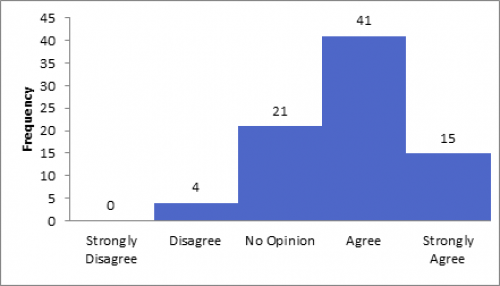
Figure 3: Student response to question 4: Small group discussions of the case helped me understand the specific course topics.
Students were also asked to provide general feedback for improvement of the case study and case activities. About half of the respondents suggested different time allocations. The amount of time available to present the case and the logistics should be cut back, including the presentation of background material, and the case should be introduced earlier in the term to allow for more guidance on what was expected. This would make the discussions more efficient. Some requested a more challenging problem, while others suggested a more open-ended topic, with less detail provided, might provide more scope for discussion.
Key Takeaways
The results of the first implementation of this case study are encouraging. The students appreciated the added learning provided by this approximation to practice to lectures and examples provided by the instructor. The 3D printed artifact was an important focus of the group discussions as confirmed by observations by the instructor. One of the 13 groups working on the case study arrived at the design solution adopted by Dalsa. A possible extension of the case study would be to have groups estimate the manufacturing cost of the new process.

Related links
- Case Storyboards
- Request a Case
- Dalsa Camera Parts Fabrication Analysis

Hannah Van Opstal
Student, Systems Design Engineering
I think getting case study experience is the first step in really helping students see all the possibilities and everything they can accomplish.

Contact Waterloo Cases in Design Engineering Steve Lambert Tel: (519) 888-4728 Email: [email protected]
Contact us Website feedback
- Contact Waterloo
- Maps & Directions
- Accessibility
The University of Waterloo acknowledges that much of our work takes place on the traditional territory of the Neutral, Anishinaabeg and Haudenosaunee peoples. Our main campus is situated on the Haldimand Tract, the land granted to the Six Nations that includes six miles on each side of the Grand River. Our active work toward reconciliation takes place across our campuses through research, learning, teaching, and community building, and is co-ordinated within the Office of Indigenous Relations .
(Stanford users can avoid this Captcha by logging in.)
- Send to text email RefWorks EndNote printer
Case studies in mechanical engineering : decision making, thermodynamics, fluid mechanics and heat transfer
Available online, more options.
- Find it at other libraries via WorldCat
- Contributors
Description
Creators/contributors, contents/summary.
- Case 1 Steam Turbine Performance Degradation 1-1 1.0 Steam Turbine Types 1-2 1.0.1 Steam Turbine Components 1-4 1.0.2 Startup and Operation 1-6 1.0.3 Performance Monitoring and Analysis 1-8 1.0.4 Analyzing Performance Data Corrected Pressures 1-9 1.0.5 Analyzing Performance Data Flow Function 1-11 1.1 Refresher 1-13 1.1.1 Steam Turbine Efficiency 1-13 1.1.2 Example 1-13 1.2 Case Study Details: 1-13 1.2.1 Performance Trend 1-14 1.2.2 IP Turbine Enthalpy Drop 1-15 1.3 Case Study Findings 1-15 1.4 Decision Making and Actions 1-16 1.4.1 Value 1-16 1.4.2 Decision Making and Actions Alternatives 1-18 1.4.3 Decision Making and Actions Making a Plan 1-18 1.5 Closure 1-19 1.6 Symbols and Abbreviations 1-20 Case 2 Risk/Reward Evaluation 2-1 2.0 Case Study 2-3 2.1 Background: 2-3 2.1.1 Types of Gas Turbine Generating Plants 2-3 2.2 Gas Turbine Operating Risks 2-7 2.2.1 Gas Turbine Major Maintenance 2-8 2.2.2 Equivalent Fired Hours 2-9 2.2.3 Failure Costs 2-9 2.2.4 Reading Assignment 2-10 2.3 Case Study Evaluations: 2-10 2.3.1 Review 2-10 2.3.2 Presenting Results 2-11 2.3.3 Judgment Calls 2-12 2.3.4 Exercise: 2-13 2.3.5 Sensitivities: 2-13 2.3.6 Exercise - Sensitivities 2-14 2.3.7 Presentation of Results 2-14 2.4 Case Study Results 2-14 2.5 Closure 2-15 2.6 Answer Key 2-16 Case 3 Gas Turbine Compressor Fouling 3-1 3.0 Background 3-2 3.0.1 Gas Turbine Types 3-2 3.0.2 Gas Compressor Fouling and Cleaning 3-3 3.0.3 Exercise
- 1: Read the following articles: 3-4 3.0.4 Inlet Filtration 3-5 3.0.5 Gas Turbine Performance Measurement 3-7 3.1 Case Study Details 3-7 3.1.1 Derivative of the Cost Function 3-8 3.1.2 Exercise
- 2: 3-8 3.1.3 Linear Programming 3-9 3.1.4 New Methods New Thinking 3-9 3.1.5 Presenting Results 3-11 3.2 Case Study Results / Closure 3-11 3.3 Symbols: 3-13 3.4 Attachments 3-14 Case 4 Flow Instrument Degradation, Use and Placement 4-1 4.0 Background 4-2 4.0.1 Nuclear Steam Power Cycles 4-2 4.0.2 Core power level measurement 4-3 4.0.3 Differential Pressure Flow Measurement Devices 4-4 4.0.4 Two-Phase Piping Pressure Drop 4-7 4.1 Case Study Details 4-8 4.2 Exercises 4-11 4.2.1 Complete the following: 4-11 4.2.2 Uncertainty 4-11 4.2.3 Conclusions 4-12 4.3 Closure 4-12 Case 5 Two-Phase Hydraulics 5-1 5.0 Background 5-2 5.0.1 Reading Assignment 5-3 5.0.2 Muller-Steinhagen and Heck 5-4 5.0.3 Void Fraction 5-5 5.0.4 Pumping Net Positive Suction Head Required 5-6 5.0.5 Projects 5-7 5.1 Case Study Details 5-9 5.2 Exercises 5-11 5.2.1 Liquid Flow to Reboiler 5-11 5.2.2 Two-Phase Flow from Reboiler 5-11 5.2.3 Pump Suction 5-11 5.2.4 Discuss: 5-12 5.3 Closure: 5-12 5.4 Answer Key: 5-14 Case 6 Reliability and Availability 6-1 6.0 Background 6-2 6.0.1 Models 6-3 6.0.2 Availability: Planned and Unplanned Outages Parallel Systems 6-5 6.0.3 Series and Parallel Processes 6-7 6.0.4 Stochastic Models 6-9 6.0.5 Reading 6-9 6.0.6 Applicability 6-10 6.1 Case Study Details 6-10 6.1.1 Initial Block Flow Diagram 6-10 6.1.2 Business Structure 6-12 6.1.3 Modified Block Flow Diagram 6-13 6.1.4 Other Considerations 6-14 6.1.5 Exercises: 6-15 6.2 Closure 6-15 Case 7 Efficiency and Air Emissions 7-1 7.0 Background 7-3 7.0.1 Cogeneration or CHP 7-3 7.0.2 Environmental Considerations 7-3 7.0.3 Efficiency 7-5 7.1 Case Study Details 7-6 7.1.1 General 7-6 7.1.2 Proposed CHP Plant 7-7 7.1.3 Steam Boilers 7-8 7.1.4 Fuel 7-8 7.1.5 Gas Turbine 7-9 7.1.6 Air 7-10 7.2 Refresher 7-11 7.2.1 Gas Mixture Molecular Weight 7-11 7.2.2 Gas Mixture Heating Value 7-11 7.2.3 Species Weight Fraction 7-11 7.2.4 Ultimate Analysis 7-12 7.3 Exercises: 7-12 7.3.1 Outside Reading 7-12 7.4 Exercises 7-13 7.4.1 Boiler Operation 7-13 7.4.2 Cogeneration Plant 7-13 7.4.3 Conclusion: 7-14 7.5 Closure 7-14 7.6 Symbols and Abbreviations 7-19 Case 8 Low Carbon Power Production 8-1 8.0 Background 8-3 8.0.1 Dispatch and Renewable Power Resources 8-4 8.0.2 Capacity Factor and Availability Factor 8-4 8.0.3 Fuel Costs (FC in equation (8.1)) 8-5 8.0.4 Capital Cost Recovery (CR in equation (8.1)) 8-5 8.0.5 Non-Fuel Operations and Maintenance (M in equation (8.1)) 8-5 8.0.6 Regulation and Government Support 8-5 8.1 Refresher 8-6 8.1.1 Short Run Marginal Cost 8-6 8.1.2 CO2 Emissions 8-6 8.1.3 Long Run Marginal Cost 8-6 8.2 Case Study Details 8-6 8.2.1 Reading Assignment 8-7 8.2.2 Transmission Costs 8-8 8.2.3 Economic Models 8-8 8.2.4 Carbon Emissions 8-9 8.2.5 Understanding the Findings 8-9 8.2.6 Explaining the Results 8-11 8.3 Closure: 8-11 8.4 Answer Key 8-13 Case 9 Heat Exchangers and Drain Line Sizing 9-1 9.0 Background 9-2 9.0.1 Steam Surface Condensers 9-2 9.0.2 Feedwater Heaters 9-5 9.0.3 Overall Heat Transfer Coefficient 9-6 9.0.4 Condensing Heat Transfer 9-6 9.0.5 Forced Convection Inside of Tubes 9-6 9.0.6 Conduction heat Transfer 9-7 9.0.7 Off-Design Exchanger Performance 9-7 9.0.8 Drain Line Sizing 9-8 9.1 Reading 9-9 9.1.1 Read the following article and answer the questions below. 9-9 9.1.2 Additional reading and reference: 9-9 9.2 Case Study Details 9-10 9.2.1 Flow Diagram and Equipment 9-10 9.2.2 Design Cases 9-12 9.2.3 Exercises: 9-13 9.3 Closure 9-14 9.4 Answer Key: 9-16 Case 10 Optimized Maintenance 10-1 10.0.1 Maintenance Practices 10-2 10.0.2 Economic Model for Maintenance 10-3 10.0.3 Operating Costs Other Than Maintenance 10-4 10.1 Refresher 10-4 10.1.1 Cost of to Generate Power 10-4 10.1.2 Fixed and Variable Operations and Maintenance (O&M) 10-4 10.1.3 Cost of Fuel 10-4 10.1.4 Short Run Gross Margin 10-5 10.2 Presentation Techniques 10-5 10.2.1 Waterfall Chart 10-5 10.2.2 Line and Scatter Plots 10-6 10.3 Reading 10-6 10.3.1 Read the following and answer the questions below. 10-6 10.3.2 Questions: 10-7 10.3.3 Additional Resources 10-7 10.4 Case Study Details 10-7 10.4.1 Data 10-7 10.4.2 Exercises 10-10 10.5 Closure 10-11 10.6 Answer Key: 10-13 10.7 Symbols and Abbreviations 10-17 Case 11 Project Engineering 11-1 11.0 Opening 11-1 11.1 Background 11-2 11.1.1 Mustard 11-2 11.1.2 Working with Warfare Agents 11-3 11.1.3 Alternative Technology HD Decontamination 11-4 11.2 Project Planning and Definition 11-4 11.2.1 Project Management 11-7 11.2.2 Client Requirements 11-7 11.2.3 Work Breakdown Structure 11-9 11.2.4 Growing the Team 11-9 11.2.5 Process Basis of Design 11-11 11.3 Executing the Project 11-12 11.3.1 The Process 11-12 11.3.2 Stakeholder Communication 11-13 11.3.3 Ton Container Cleanout. 11-14 11.3.4 Demonstration Tests 11-14 11.3.5 Materials of Construction 11-15 11.3.6 Unexpected Events 11-16 11.4 Closure 11-16 11.5 Answer Key: 11-18 Case 12 In the Woodshop 12-1 12.0 Background 12-2 12.0.1 Band Saw 12-3 12.0.2 Table Saws 12-3 12.0.3 The Router 12-4 12.0.4 Safety 12-4 12.0.5 Measurements 12-4 12.1 References: 12-5 12.2 Case Study Details 12-5 12.2.1 Exercise 12-6 12.2.2 The Cove 12-7 12.2.3 Extra credit 12-8 12.3 Closure 12-8 12.4 Glossary: 12-10 12.5 Solutions: 12-11 Glossary Appendix Index.
- (source: Nielsen Book Data)
- Foreword xiii Preface xiv Introduction xvi Case 1 Steam Turbine Performance Degradation 1 1.1 Steam Turbine Types 2 1.1.1 Steam Turbine Components 5 1.1.2 Startup and Operation 7 1.1.3 Performance Monitoring and Analysis 10 1.1.4 Analyzing Performance Data Corrected Pressures 10 1.1.5 Analyzing Performance Data Flow Function 12 1.2 Refresher 14 1.2.1 Steam Turbine Efficiency 14 1.2.2 Example 14 1.3 Case Study Details 15 1.3.1 Performance Trend 15 1.3.2 IP Turbine Enthalpy Drop 16 1.4 Case Study Findings 17 1.5 Decision Making and Actions 18 1.5.1 Value 18 1.5.2 Decision Making and Actions Alternatives 19 1.5.3 Decision Making and Actions Making a Plan 20 1.6 Closure 20 1.7 Symbols and Abbreviations 21 1.8 Answer Key 21 References 24 Case 2 Risk / Reward Evaluation 26 2.1 Case Study 28 2.2 Background 29 2.2.1 Types of Gas Turbine Generating Plants 29 2.3 Gas Turbine Operating Risks 33 2.3.1 Gas Turbine Major Maintenance 35 2.3.2 Equivalent Fired Hours 36 2.3.3 Failure Costs 37 2.3.4 Reading Assignment 37 2.4 Case Study Evaluations 38 2.4.1 Review 38 2.4.2 Presenting Results 39 2.4.3 Judgment Calls 40 2.4.4 Exercise 40 2.4.5 Sensitivities 41 2.4.6 Exercise Sensitivities 41 2.4.7 Presentation of Results 41 2.5 Case Study Results 42 2.6 Closure 42 2.7 Answer Key 43 Reference 45 Case 3 Gas Turbine Compressor Fouling 46 3.1 Background 47 3.1.1 Gas Turbine Types 47 3.1.2 Gas Compressor Fouling and Cleaning 49 3.1.3 Exercise 1 50 3.1.4 Inlet Filtration 50 3.1.5 Gas Turbine Performance Measurement 52 3.2 Case Study Details 53 3.2.1 Derivative of the Cost Function 54 3.2.2 Exercise 2 55 3.2.3 Linear Programming 56 3.2.4 New Methods New Thinking 56 3.2.5 Exercise 3: Gas Turbine Inlet Filtration Upgrade 57 3.2.6 Presenting Results 57 3.3 Case Study Results / Closure 58 3.4 Symbols and Abbreviations 60 3.5 Answer Key 60 References 63 Case 4 Flow Instrument Degradation, Use and Placement 64 4.1 Background 65 4.1.1 Nuclear Steam Power Cycles 65 4.1.2 Core Power-Level Measurement 67 4.1.3 Differential Pressure Flow Measurement Devices 67 4.1.4 Two-Phase Piping Pressure Drop 71 4.1.5 Uncertainty 71 4.2 Case Study Details 72 4.3 Exercises 73 4.3.1 Uncertainty 74 4.3.2 Conclusions 76 4.4 Closure 76 4.5 Symbols and Abbreviations 76 4.6 Answer Key 77 4.7 Further Reading 79 References 79 Case 5 Two-Phase Hydraulics 80 5.1 Background 81 5.1.1 Reading Assignment 83 5.1.2 Muller-Steinhagen and Heck 83 5.1.3 Void Fraction 84 5.1.4 Pumping Net Positive Suction Head Required 86 5.1.5 Projects 86 5.2 Case Study Details 89 5.3 Exercises 90 5.3.1 Liquid Flow to Reboiler 90 5.3.2 Two-Phase Flow from Reboiler 90 5.3.3 Pump Suction 91 5.3.4 Discuss 92 5.4 Closure 92 5.5 Symbols and Abbreviations 92 5.6 Answer Key 93 References 94 Case 6 Reliability and Availability 95 6.1 Background 96 6.1.1 Models 97 6.1.2 Availability: Planned and Unplanned Outages Parallel Systems 100 6.1.3 Series and Parallel Processes 102 6.1.4 Stochastic Models 103 6.1.5 Reading 104 6.1.6 Applicability 104 6.2 Case Study Details 105 6.2.1 Initial Block Flow Diagram 105 6.2.2 Business Structure 106 6.2.3 Modified Block Flow Diagram 108 6.2.4 Other Considerations 108 6.2.5 Exercises 109 6.3 Closure 110 6.4 Symbols and Abbreviations 110 6.5 Answer Key 111 Reference 113 Case 7 Efficiency and Air Emissions 114 7.1 Background 115 7.1.1 Cogeneration or CHP 115 7.1.2 Environmental Considerations 116 7.1.3 Efficiency 118 7.2 Case Study Details 119 7.2.1 General 119 7.2.2 Proposed CHP Plant 120 7.2.3 Steam Boilers 121 7.2.4 Fuel 121 7.2.5 Gas Turbine 121 7.2.6 Air 123 7.3 Refresher 123 7.3.1 Gas Mixture Molecular Weight 123 7.3.2 Gas Mixture Heating Value 123 7.3.3 Species Weight Fraction 123 7.3.4 Ultimate Analysis 124 7.4 Objective 124 7.5 Exercises 125 7.5.1 Outside Reading 125 7.5.2 Boiler Operation 125 7.5.3 Cogeneration Plant 126 7.5.4 Conclusion 126 7.6 Closure 126 7.7 Symbols and Abbreviations 127 7.8 Answer Key 127 References 130 Case 8 Low-Carbon Power Production 131 8.1 Background 132 8.1.1 Dispatch and Renewable Power Resources 133 8.1.2 Capacity Factor and Availability Factor 134 8.1.3 Fuel Costs (FC in Equation (8.1)) 134 8.1.4 Capital Cost Recovery (CR in Equation (8.1)) 135 8.1.5 Nonfuel Operations and Maintenance (M in Equation (8.1)) 135 8.1.6 Regulation and Government Support 135 8.2 Refresher 136 8.2.1 Short-Run Marginal Cost 136 8.2.2 CO2 Emissions 136 8.2.3 Long-Run Marginal Cost 136 8.3 Case Study Details 136 8.3.1 Reading Assignment 137 8.3.2 Transmission Costs 138 8.3.3 Economic Models 139 8.3.4 Carbon Emissions 139 8.3.5 Understanding the Findings 140 8.3.6 Explaining the Results 141 8.4 Closure 141 8.5 Answer Key 142 References 144 Case 9 Heat Exchangers and Drain Line Sizing 146 9.1 Background 147 9.1.1 Steam Surface Condensers 147 9.1.2 Feedwater Heaters 151 9.1.3 Overall Heat Transfer Coefficient 152 9.1.4 Condensing Heat Transfer 153 9.1.5 Forced Convection Inside Tubes 153 9.1.6 Conduction Heat Transfer 153 9.1.7 Off-Design Exchanger Performance 154 9.1.8 Drain Line Sizing 155 9.2 Reading 155 9.3 Case Study Details 156 9.3.1 Flow Diagram and Equipment 156 9.3.2 Design Cases 157 9.3.3 Exercises 159 9.4 Closure 160 9.5 Symbols and Abbreviations 161 9.6 Answer Key 162 9.7 Further Reading 164 References 164 Case 10 Optimized Maintenance 165 10.1 Background 166 10.1.1 Maintenance Practices 166 10.1.2 Economic Model for Maintenance 167 10.1.3 Operating Costs other than Maintenance 168 10.2 Refresher 169 10.2.1 Cost to Generate Power 169 10.2.2 Fixed and Variable Operations and Maintenance (O&M) 169 10.2.3 Cost of Fuel 169 10.2.4 Short ]Run Gross Margin 169 10.3 Presentation Techniques 169 10.3.1 Waterfall Chart 169 10.3.2 Line and Scatter Plots 171 10.4 Reading 171 10.4.1 Questions 171 10.5 Case Study Details 172 10.5.1 Data 172 10.5.2 Exercises 174 10.6 Closure 176 10.7 Symbols and Abbreviations 176 10.8 Answer Key 177 10.9 Further Reading 184 References 185 Case 11 Project Engineering 186 11.1 Opening 186 11.2 Background 187 11.2.1 Mustard 187 11.2.2 Working with Warfare Agents 188 11.2.3 Alternative Technology for HD Decontamination 189 11.3 Project Planning and Definition 189 11.3.1 Project Management 192 11.3.2 Client Requirements 192 11.3.3 Work Breakdown Structure 194 11.3.4 Growing the Team 195 11.3.5 Process Basis of Design 196 11.4 Executing the Project 197 11.4.1 The Process 198 11.4.2 Stakeholder Communication 198 11.4.3 Ton Container Cleanout 199 11.4.4 Demonstration Tests 199 11.4.5 Materials of Construction 200 11.4.6 Unexpected Events 201 11.5 Closure 201 11.6 Answer Key 202 Reference 208 Case 12 In the Woodshop 209 12.1 Background 211 12.1.1 Band Saw 211 12.1.2 Table Saws 211 12.1.3 The Router 213 12.1.4 Safety 214 12.1.5 Measurements 214 12.2 Case Study Details 214 12.2.1 Exercise 215 12.2.2 The Cove 215 12.2.3 Extra Credit 217 12.3 Closure 217 12.4 Glossary 219 12.5 Solutions 219 12.6 Further Reading 220 References 221
- Appendix 222 Glossary 225 Index 235.
Case Study: Challenges and Issues in Teaching Fully Online Mechanical Engineering Courses
- Conference paper
- First Online: 01 January 2014
- Cite this conference paper

- Sara McCaslin 3 &
- Fredericka Brown 3
Part of the book series: Lecture Notes in Electrical Engineering ((LNEE,volume 312))
2431 Accesses
Every year more engineering programs are looking at online courses as a way to expand their programs and facilitate the educational goals of working professionals. This case study summarizes specific challenges faced by two faculty members in preparing and presenting six mechanical engineering classes, all core classes at either the graduate or undergraduate level, in a fully online format. The challenges discussed involve course preparation and planning, interaction with and among students, lack of student preparation, and exams.
This is a preview of subscription content, log in via an institution to check access.
Access this chapter
- Available as PDF
- Read on any device
- Instant download
- Own it forever
- Available as EPUB and PDF
- Compact, lightweight edition
- Dispatched in 3 to 5 business days
- Free shipping worldwide - see info
- Durable hardcover edition
Tax calculation will be finalised at checkout
Purchases are for personal use only
Institutional subscriptions
J. Visser, “Faculty Work in Developing and Teaching Web-based Distance Courses: A Case Study of Time and Effort,” The American Journal of Distance Education , vol. 14, no. 3, pp. 21–32, 2000.
Google Scholar
G. Hislop and H. Ellis, “A study of faculty effort in online teaching,” The Internet and Higher Education , vol. 7, no. 1, pp. 15–31, 2004.
R. Van de Vord and K. Pogue, “Teaching Time Investment: Does Online Really Take More Time than Face-to-Face?,” International Review of Research in Open and Distance Learning , vol. 13, no. 3, pp. 132–146, 2012.
R. Smith, Conquering the Content: A Step-by-Step Guide to Online Course Design, Jossey-Bass, 2008.
P. Hong, D. Anderson, D. Williams, J. Jackson, T. Barnwell, M. Hayes, R. Schafer and J. Echard, “DSP for Practicing Engineers: A Case Study in Internet Course Delivery,” IEEE Transactions on Education , vol. 37, no. 3, pp. 301–310, August 2004.
SoftChalk, “SoftChalk,” [Online]. Available: http://softchalk.com/products/softchalk . [Accessed 25 May 2012].
“LiveScribe Echo Smartpen,” LiveScribe, [Online]. Available: http://www.livescribe.com/en-us/smartpen/echo/ . [Accessed 25 May 2012].
“Mini Workshop -- Electronic Inking with the Tablet: Instructional Applications and Findings on Use of the Livescribe Smartpen,” in 40th ASEE/IEEE Frontiers in Education Conference , 2010.
Respondus, Inc., “Respondus Lockdown Browswer,” 11 November 2013. [Online]. Available: http://www.respondus.com/products/lockdown-browser/ . [Accessed 11 November 2013].
S. Trenholm, “A Review of Cheating in Fully Asynchronous Online Courses: A Math- or Fact-based Course Perspective,” Journal of Educational Technology Systems , vol. 35, no. 3, pp. 281–300, 2006.
R. Ubell, “Engineers turn to e-learning,” IEEE Spectrum , pp. 59–63, October 2000.
S. Haag and J. Palais, “Engineering Online: Assessing Innovative Education,” Journal of Engineering Education , pp. 285–290, 2002.
W. Powell, “Essential Design Elements for Successful Online Courses,” Journal of Geoscience Education , vol. 51, no. 2, pp. 221–230, March 2003.
S. Hrastinski, “What is online learner participation? A literature review,” Computers & Education , vol. 51, no. 4, pp. 1755–1765, 2008.
M. Dixson, “Creating effective student engagement in online courses: What do students find engaging?,” Journal of the Scholarship of Teaching and Learning , vol. 10, no. 2, pp. 1–13, 2010.
D. Bollinger and D. Des Armier, “Active learning in the online environment: The integration of student-generated audio files,” Active Learning in Higher Education , vol. 14, no. 3, pp. 201–211, 2013.
S. Young and M. Bruce, “Classroom Community and Student Engagement in Online Courses,” Journal of Online Learning and Teaching , vol. 7, no. 2, 2011.
S. Hrastinski, “A theory of online learning as online participation,” Computers & Education , vol. 52, no. 1, pp. 78–82, 2009.
Download references
Author information
Authors and affiliations.
Mechanical Engineering Department, The University of Texas at Tyler, 3900 University Blvd, 75799, Tyler, TX, USA
Sara McCaslin & Fredericka Brown
You can also search for this author in PubMed Google Scholar
Corresponding author
Correspondence to Sara McCaslin .
Editor information
Editors and affiliations.
Computer Science and Engineering, University of Bridgeport Associate Dean for Graduate Programs, Bridgeport, Connecticut, USA
Khaled Elleithy
Engineering and Computer Science, University of Bridgeport Dean of the School of Engineering, Bridgeport, Connecticut, USA
Rights and permissions
Reprints and permissions
Copyright information
© 2015 Springer International Publishing Switzerland
About this paper
Cite this paper.
McCaslin, S., Brown, F. (2015). Case Study: Challenges and Issues in Teaching Fully Online Mechanical Engineering Courses. In: Elleithy, K., Sobh, T. (eds) New Trends in Networking, Computing, E-learning, Systems Sciences, and Engineering. Lecture Notes in Electrical Engineering, vol 312. Springer, Cham. https://doi.org/10.1007/978-3-319-06764-3_74

Download citation
DOI : https://doi.org/10.1007/978-3-319-06764-3_74
Published : 08 November 2014
Publisher Name : Springer, Cham
Print ISBN : 978-3-319-06763-6
Online ISBN : 978-3-319-06764-3
eBook Packages : Engineering Engineering (R0)
Share this paper
Anyone you share the following link with will be able to read this content:
Sorry, a shareable link is not currently available for this article.
Provided by the Springer Nature SharedIt content-sharing initiative
- Publish with us
Policies and ethics
- Find a journal
- Track your research
- Master of Engineering
- MS in Biomedical Engineering
- MS in Mechanical Engineering
- MS in Systems & Control Engineering
- State Authorization
- Technology Requirements
- Tuition and Financial Aid
- Class Profile
- Online Experience
Emerging Trends in Mechanical Engineering

From tiny, tooth-scrubbing robots 1 to rockets capable of deep space exploration, 2 the field of mechanical engineering is on the cutting edge of new technologies. These exciting advancements are both powered by and driving mechanical engineering. If you want to stay relevant in this fast-paced industry, you need to stay up to date on the latest trends. 3
Read on to explore several of the most recent mechanical engineering trends and ways in which they’re likely to be implemented in the near future.
Sustainable Engineering and Renewable Energy
Sustainable engineering is the integration of sustainability principles into the design, operation and disposal of mechanical systems and products. Sustainability involves focus on reducing environmental impact, enhancing efficiency and promoting the use of renewable resources. Increasing awareness of climate change and environmental degradation is driving the demand for sustainable engineering solutions. 4
Governments, industries and consumers are seeking more eco-friendly products and energy sources. 5 As a mechanical engineer, you may be involved in designing and refining energy-efficient technologies such as more effective wind turbines and improved solar panels and geothermal energy systems. 6
Digitalization and Industry 4.0
Digitalization and Industry 4.0—the process of integrating digital technology into industrial and manufacturing processes—are transforming mechanical engineering , leading to what many call the Fourth Industrial Revolution. This revolution is characterized by the smart factory, where machines and products are connected to devices that allow for real-time tracking to optimize production efficiency and performance. Digital technologies are being incorporated into all aspects of engineering, from design and prototyping to the manufacturing process and maintenance. By combining robotics, real-time data and artificial intelligence, smart factories can make adjustments as soon as they’re needed, often without the need for human intervention. 7
The Internet of Things (IoT)
The Internet of Things involves embedding sensors, software and other technologies into physical mechanical systems, allowing them, through wireless connectivity, to exchange data with other devices and systems over the internet. For example, by equipping inventory with sensors, organizations can track it from the time it’s produced until it’s delivered to the buyer. Engineers can also use IoT technology on factory machines to monitor performance and receive alerts regarding maintenance issues before an outage or failure. 8 This integration results in smarter, more responsive systems that can adapt to changing conditions and user needs, such as statistical usage data on a product that engineers can use to improve subsequent designs. 9
Automation and Robotics
Automation employs control systems, such as computers or robots , and information technologies to handle different processes and machinery in an industry to replace human intervention. In mechanical engineering, this translates to increased efficiency, higher production rates and improved safety in manufacturing processes.
Robots are used to perform complex tasks and those that are dangerous, tedious or in need of precision beyond human capability—assembling small, intricate components, for example, or drilling in dangerous areas. They protect humans and increase productivity and consistency in assembly operations.
Additive Manufacturing Through 3D Printing
Additive manufacturing—specifically, 3D printing—may not seem trendy or revolutionary. The first 3D printer was invented in 1981, but they weren’t commercially available until 2006. 10 Though the technology has been around for years, we're seeing increasingly sophisticated new advancements in uses, techniques and materials. Niche companies, such as Relatively Space, are using 3D tech to custom-print parts on a low-volume basis. The Terran R rocket, for example, is the world’s first 3D-printed, reusable rocket. 11
One of the earliest and still primary uses of 3D printing is rapid prototyping. It allows designers and engineers to create, test, and modify prototypes quickly, dramatically reducing the development time and cost. Additionally, just-in-time production eliminates the need for expensive volume requirements and inventory storage. 12
Advanced Materials and Nanotechnology
Nanotechnology is revolutionizing mechanical engineering by enabling the development of advanced materials with unprecedented properties. Lightweight and high-strength new materials, such as carbon fiber composites and advanced alloys, are being designed for enhanced durability and performance, significantly benefiting the aerospace and automotive sectors, among others. 13
Nanotechnology allows mechanical engineers to manipulate materials at the molecular level to achieve desired performance characteristics, leading to innovative solutions in product design and manufacturing. Nanomaterials, with their exceptional strength, conductivity and thermal properties, are finding applications in many industries, including electronics, energy storage and biomaterials. 14
Artificial Intelligence (AI) and Machine Learning (ML)
Applications in optimization and decision-making.
AI and ML algorithms can be used to optimize design processes and create more efficient and effective mechanical systems. These algorithms can analyze vast datasets to identify the best design parameters, considering factors like material properties, environmental impacts and manufacturing constraints. In the manufacturing industry, AI and ML help to optimize production processes, increase production efficiency, reduce waste and improve quality. They can predict the outcomes of process changes, guide decision-making and automate routine tasks. 15
Intelligent Control Systems and Autonomous Machinery
AI allows for intelligent control systems that can autonomously adjust operating parameters in real-time for optimal performance. These systems are used in various applications, from climate control in buildings to adaptive control in manufacturing processes.
AI and ML power autonomous machinery, such as self-driving vehicles, drones and robotic systems. In mechanical engineering, benefits of these technologies include automating jobs that require high precision, improving safety by reducing human errors and advancing human knowledge through applications such as deep space exploration. 16
Predictive Maintenance and Condition Monitoring in Mechanical Systems
AI and ML are advancing maintenance strategies in mechanical engineering through predictive maintenance and condition monitoring. These technologies use data from sensors and historical records to accurately predict machine failures, allowing for proactive maintenance to prevent breakdowns.
Continuous monitoring of equipment conditions with AI algorithms—analyzing factors such as vibration, temperature and sound—facilitates early issue detection, reducing downtime and maintenance costs. Implementing AI in these areas improves the reliability of mechanical systems and their safety by averting potential hazardous failures. 17
Become an Innovator in Modern Mechanical Engineering
Recent trends, new trends, the high demand for new methods, sustainable development, smart manufacturing and the latest technology—all of these create opportunities for qualified professionals motivated to shape the future of mechanical engineering.
In Case Western Reserve University’s online Master of Science in Mechanical Engineering program, you'll gain the skills and knowledge you need to become a leader in mechanical engineering. Our faculty of experts and advanced curriculum are widely respected, and you’ll have the flexibility of earning your degree on your schedule, completely online . Contact one of our admissions outreach advisors today to learn more.
- Retrieved on November 13, 2023, from nih.gov/news-events/nih-research-matters/swarm-tiny-robots-scrub-teeth
- Retrieved on November 13, 2023, from nasa.gov/careers/engineering/
- Retrieved on November 13, 2023, from powermotiontech.com/technologies/other-technologies/article/21271655/five-emerging-technology-trends-for-mechanical-engineers
- Retrieved on November 13, 2023, from utilitiesone.com/sustainable-engineering-driving-innovation-for-a-greener-future
- Retrieved on November 13, 2023, from ftc.gov/news-events/topics/truth-advertising/green-guides
- Retrieved on November 13, 2023, from linkedin.com/pulse/role-mechanical-engineering-renewable-energy-technologies-raghul-m/
- Retrieved on November 13, 2023, from linkedin.com/pulse/embracing-revolution-role-industry-40-mechanical-field-taseer-abbas/
- Retrieved on November 13, 2023, from zipitwireless.com/blog/3-great-examples-of-iot-in-manufacturing
- Retrieved on November 13, 2023, from damassets.autodesk.net/content/dam/autodesk/www/mech-eng-ressource-center/assets/What%20does%20the%20IoT%20mean%20to%20mechanical%20engineers%20-%20eBook.pdf
- Retrieved on November 13, 2023, from ultimaker.com/learn/the-complete-history-of-3d-printing/#
- Retrieved on November 13, 2023, from relativityspace.com/
- Retrieved on November 13, 2023, from ic3dprinters.com/additive-manufacturing-jit-parts-service-solutions-next-industrial-revolution/
- Retrieved on November 13, 2023, from utilitiesone.com/the-application-of-advanced-materials-in-mechanical-engineering
- Retrieved on November 13, 2023, from education.nationalgeographic.org/resource/nanotechnology/
- Retrieved on November 13, 2023, from mdpi.com/2075-1702/11/6/577
- Retrieved on November 13, 2023, from baesystems.com/en-us/definition/autonomous-control-systems
- Retrieved on November 13, 2023, from bannerengineering.com/us/en/solutions/iiot-data-driven-factory/predictive-maintenance.html
Return to Online Engineering Blog
Complete the form below before proceeding to the application portal.
Case Western Reserve University has engaged Everspring , a leading provider of education and technology services, to support select aspects of program delivery.
Engineering Case Studies
- Getting Started
- Finding Case Studies in the U-M Library
- Case Studies That Are Freely Available
Selected Case Studies Books
Finding books on case studies.
This page lists a small selection of engineering case studies ebooks available to you through the U-M Library.
You can find case studies in several engineering disciplines in books available to you at the library. To look for case studies, use Library Catalog Search . Include the phrase "case studies" as part of your search.
For example, the search string "case studies" AND "aerospace engineering" will return a wide array of aerospace engineering related books that include case studies.
- << Previous: Case Studies That Are Freely Available
- Last Updated: Sep 19, 2023 11:21 AM
- URL: https://guides.lib.umich.edu/engrcasestudies
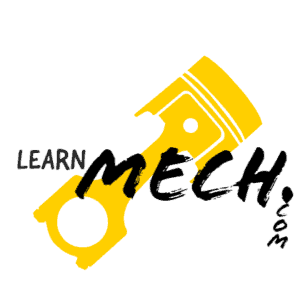
500 + Mechanical Engineering projects For College Students
Table of Contents
Latest Mechanical Engineering Major ,Minor ,Mini Projects 2018
Old view (500 + ) mechanical engineering projects ideas, topics ,list.
We provides latest 2010 – 2018 Mini and Main Mechanical Engineering Projects , Project Ideas, Project Topics for final Year Mechanical and Automobile Engineering Students with Abstract, and Reports on Pneumatic, Hydraulics and Fluid mechanics.

Industrial engineering and management Related Mechanical projects
New Updated Mechanical Engineering Project titles ( June 2018)
- Design, Development and Testing of Axis Piston Pump
- Design and Analysis of Automated Truck Cabin Suspension System
- AUTOMATIC LASER GUIDED PUNCHING MACHINE
- Design and Fabrication of frictionless energy generation using flywheel for electric vehicles
- Design and Fabrication of Piston Operated Water Pump
- Design of basic model of semi-automatic dish washer machine
- Spiral binding punching machine – Diploma Mechanical Projects
- Mechanical Project on Auto Turning Fuel Valve -Report Download
- Design and analysis Of Crane Hook -Mechanical CAD/CAM Project
- Paper bag making machine Latest 2019 Mechanical Project
- Withworth Quick Return mechanism Operated Conveyor- Mechanical Project
- Design and Fabrication Of Pepper thresher machine -Mechanical Project
- Defence -military based Projects For Engineering Students
- Advance Cam Operated Hammer -Mechanical Project
- DESIGN AND FABRICATION OF SLIDING RAM BY USING QUICK RETURN MECHANISM
- Design and Analysis of Two Wheel Drive Forklift for Industrial Warehouses
- Design and Fabrication Of Beans Sheller Machine
- Box Transfer Mechanism , Through kinematic Link -Mechanical Project
- Design and Fabrication on Hydrogen engine (Water fuel) – Mechanical Project
Design and Fabrication Related Mechanical Engineering Projects:
- DESIGN AND FABRICATION OF OIL SKIMMER PROJECT
- Design and Fabrication Of Reaction Turbines-Mechanical Project
- Modern Mirror Cutting Machine – Mechanical Project 2017
- Design and Fabrication Of Multiple Wood Working Machine
- Automatic Spiral Punching Machine -Mechanical Project
- Design Of Automated Wall Plastering Machine
- Design and Fabrication of Magnet and Spring Suspension in Bicycle
- Design and Fabrication Of Idler Gears- Mechanical Project
- A utomatic sliding gate openers Using Rack and Pinion – Mechanical Project
- Design and Fabrication Of Safety lift Mechanism
- Fabrication of vertical Bridge Lifting Mechanism
- DESIGN AND FABRICATION OF MODIFIED GRAIN BUCKET
- Design and Fabrication of Digital Hydraulic Jack
- Design and Development Pneumatic Operated Washer Making Machine
- Hand Operated Or Manually Operated Punching Machine
- Design and Fabrication of Stair Climbing Trolley – Mechanical Project
- Design and Fabrication of Ragi Ball Machine
- Design and Fabrication Of Motorized screw jack -Mechanical Project
- Fixed axial Pneumatic Jack – Mechanical Project
- Design and Fabrication of Typical Pipe Cutting Machine
- Design and Fabrication of a Wear Testing Machine-Mechanical Project
- Design and Fabrication of Chain Tightener-Mechanical Project
- Design and Fabrication of Plastic Bottle Crusher Machine
- Design and Fabrication of Power Generating Manual Treadmill
- Design And Fabrication Of Portable Concrete Mixture Machine
- Fabrication Of automatic Hydraulic Bending and Bend Removing Machine
- Design and Fabrication of Square Hole Drilling Machine
- Design and fabrication of a screw conveyor
- Design and Manufacturing of Segway Report Download – Mechanical Project
- Design and Fabrication of Hexagonal Cutting Lathe Machine
- Sand Sieving machine | Sand Screening machine – Mechanical Project
Automobile related projects titles include projects related to new inventions in automobiles , car designing projects, Custom Bike Modifications , Automobile parts analysis and Manufacturing.
- Design and Fabrication of a Universal Coupling (Hooke’s Joint ) Report Download
- Design and Development of Radial air engine
- DESIGN OF AN AUTOMOTIVE DIFFERENTIAL WITH REDUCTION RATIO GREATER THAN 6
- Button Operated Electro-magnetic Gear Shifting System For Two Wheeler
- Design and Fabrication of Shaft Drive for Bicycle | Mini Diploma project
- 90 DEGREE TURNING STEERING MECHANISM Automobile Mechanical Project
- Design and Analysis of Wheel Rim Using Finite Element Method
- Magnetic Shock Absorber Mechanical Project
- Automobile Surveillance -Mechanical Seminar , Project
- DESIGN OF HALF – SHAFT AND REAR WHEEL HUB ASSEMBLY OF A RACE CAR
- Design and Fabrication of Magneto-Rheological Braking system
- Design and Fabrication of Two Wheeler Hybrid Vehicle
- Design and Fabrication Of Rotary Drum Filter Mechanical project
- Simulation of Plume Spacecraft Interaction- Mechanical Project
- How to Make Vending Machine – Automatic Vending machine Projects
- Design and Fabrication of Active steering System
- Fabrication of Hybrid (Petrol and Electric) Motorcycle Vehicle
- Design and Fabrication of Foldable Bicycle – Mechanical Project
- Design of Auto-Tilting Mechanism For Car – Mechanical Project
- Design and Analysis of Truck Chassis – Mechanical Project
- Automatic Differential Unit Locking System – Mechanical Project
- Electric Power Assisted Steering -Mechanical Project
- Fabrication Of Turbocharger for two wheeler -Mechanical Project
- 360 Degree Wheel Rotation Vehicle -Mechanical Project
- Fabrication and Analysis Of A Continuously Variable Planetary Transmission System
- Fabrication of Motorized Tri-Cylinder Air Compressor
- Design and Fabrication of Aqua Silencer For IC engines
- DESIGN AND FABRICATION OF SELF – CHARGING BICYCLE
- Intelligent Braking System in Four Wheeler – Mechanical Project
- Design and Implementation of Automatic Emergency Braking System
- Design and Fabrication of Self Balancing Two Wheeler – Mechanical Project
- Design and Fabrication of Automatic Main Stand for Two-Wheelers
Agricultural Mechanical Engineering Projects:
- Manually Operated Biogas Filling Machine – Mechanical Engineering Project
- Advanced Rubber Tree Tapping Machine Report Download
- PICO HYDRO POWER GENERATION Renewable Mechanical Projects
- Design and Fabrication of Vegetable Cutter -Mechanical Project
- Design and Fabrication Of Agricultural Sprayer -Mechanical Project
- AUTOMATIC INTELLIGENT HYDRO IRRIGATION SYSTEM -MECHANICAL PROJECT
- Design and Fabrication of Pedigree Making Machine
- Study and Fabrication of Solar Powered Multiple Crop Cutter
Pneumatic and Hydraulic Projects:
- PNEUMATIC ROTARY GRINDING MACHINE- Mechanical Project
- Automatic Hydro Pneumatic Lubrication System- Mechanical Project
- Design and Fabrication Of Hydro-Pneumatic Clamping System
- Automatic Pneumatic Glass hole Drilling Machine
- Pneumatic Operated Double Hacksaw Mini Mechanical project
- Single Cylinder Double acting Reciprocating pump-Mechanical project
- Pneumatic Bearing Press -Mechanical Mini Project
- Design and Fabrication of Pneumatic Conveyor System
- Design and Fabrication Of Drum Truck Tilting System
- Automation of Fixtures Using Hydraulic Power Pack for a Bogie Underframe
- Fabrication Of Hydraulic Tailstock -Mechanical Project
- Two Jaw parallel Pneumatic Gripper Mechanical Project
- Pneumatic Dual Water pump using Pneumatic cylinders -Mechanical Project
- Fabrication of hydraulic pipe clamp pressing machine
- Automatic Pneumatic Sliding Door Using Sensors and Controllers
- Design and Development of Integrated pneumatic Car Jack
- Fabrication of High Torque Hydraulic Spanner – Mechanical Project
- Design and Fabrication of Pneumafil Controller
- ELECTRICITY AND WATER PUMPING SYSTEM USING WIND MILL
- Design and Fabrication Of Vertical Axis Wind mill | MECHANICAL PROJECT
- Biogas Compression and Storage System for Cooking Applications in Rural Households
- DESIGN AND FABRICATION POWER GENERATING SEE-SAW SYSTEM
- Design and Fabrication of Automatic Drainage Cleaning System using Solar Panel
- Design and Fabrication Of Sand Collecting and Sand Slinger Vehicle
- Solar Powered Remote Controlled Smart Security Gate -Mechanical Project
- Power Generation by Gym pull up -Mechanical Project
- Frictionless Wind Turbine Using Magnetic Levitation -Mechanical Project
- Fabrication of Humidification Plant Using Single Blower
- Reverse Osmosis Water Purification by Cycling Action
- Power Saving System For Lathe Machine- Mechanical Project
- Fabrication and Analysis of Vapour Compression System with Ellipse shaped Evaporator coil
- Bedini wheel Using Electromagnetic Flux Generation
- Design and Fabrication of Alternate Energy Storage Device using PCM
- Review of Free Energy Generator using Flywheel
- Performance Evolution of Domestic Refrigerator Using LPG Cylinder
- Design and Fabrication of Parabolic Solar Collector – Mechanical Project
- Design and Fabrication of Automated Guided Sweeping Vehicle (AGSV)
- Design of Automated Coil Winding Machine
- Automatically Timed Kinematic Transport System -Mechanical Project
- Design and Fabrication of Automatic Weight Sorting Machine
- Design and Fabrication of Staircase Climbing Robot -Mechanical Project
- Wireless Controlled Pneumatically Operated Wall Climbing Robot
- Design and Fabrication Automatic Pressure Control Valve
- Design and Fabrication of Voice Activated Robotic Arm – Mechanical Project
Machine Tools/ Manufacturing Related Mechanical Projects
- PEDESTAL SPOT WELDING MACHINE-MECHANICAL PROJECTS
- The Mechanism and Kinematics of a Pantograph Milling Machine
- Design and fabrication of Table lifting mechanism for upright drilling machines
- PANTOGRAPH UNIVERSAL GAS CUTTING MACHINE- MECHANICAL PROJECT
- Involute Gear Profile Error Detector Mechanical project
- Fabrication of Mosaic Polishing Machine- Mechanical Project
- Fabrication of Rotary Kaller- Mechanical Project
- Design and Fabrication Of Concave Attachment For Shaper Machine
- FABRICATION OF LATHE COOLANT PUMP WITH FITTING ARRANGEMENT
- Design and Animation Of Scissor Lifitng Table Mechanical Project
- Fabrication Of Home Flour Milling Machine – Mechanical Project
- Design a drill jig for drilling on cylindrical surface -Mechanical Project
- Design and Manufacturing of CNC Milling for Small scale Industries
- Design and Fabrication of 360° Flexible Drilling Machine
- Design and Development of Punching Die and Feeder Mechanism
- Wood Engraving Using 3 Axis CNC Machine – Mechanical Project
- Design and Fabrication Of CMM inspection Fixture – Mechanical project
- Design and Analysis of Blanking and Piercing die punch
- Design and Fabrication of Weeding Machine -Mechanical Agricultural Project
- Design and Fabrication Of Mini Conveyor using Geneva Mechanism
- Fabrication Of Miller Cutter with compressed air -Mechanical Project
- FABRICATION OF HELICAL SPRING LOAD TESTING MACHINE
- Indexing Method Slotted Drilling Machine-Mechanical Project
- FABRICATION OF HAND OPERATED BENDING MACHINE
- Design of a Power Saving Industrial Conveyor System
- Design and Fabrication of Semi-Automatic Road Reflector Stud Installation Machine
- Smart Operator Following Trolley For Material Handling Industries
- Bevel gear operated Screw Jack for Lifting Operation
- Quality management through six Sigma Approach – Mechanical Project
- Manual Die Cutting Machine – Leather Cutting Machine | Mechanical Project
- Need of Lapping Machine for Valve Component: A Case Study
- Design and Fabrication of Mini Jet Engine-Mechanical Project
- Heat Transfer Analysis of Engine Cylinder Fins Having Triangular Shape
This List will Update Regularly ..Keep Visiting If You Have Any Doubt Feel Free to Ask !
Related posts:

Sachin Thorat
Sachin is a B-TECH graduate in Mechanical Engineering from a reputed Engineering college. Currently, he is working in the sheet metal industry as a designer. Additionally, he has interested in Product Design, Animation, and Project design. He also likes to write articles related to the mechanical engineering field and tries to motivate other mechanical engineering students by his innovative project ideas, design, models and videos.
One thought on “ 500 + Mechanical Engineering projects For College Students ”
Refrigeration and air conditioning new projects
Leave a Reply Cancel reply
Your email address will not be published. Required fields are marked *
Save my name and email in this browser for the next time I comment.
This site uses Akismet to reduce spam. Learn how your comment data is processed .
Recent Posts
Top Branches of Mechanical Engineering
Mechanical Engineering is an essential discipline of engineering encompassing many specializations, with each contributing its unique aspect to the dynamic and inventive nature of this field. With...
Shree Ram Ayodhya Murti, idol - Vector , Wallart
The Ram Lalla idol, which is installed at Ayodhya's Ram temple has many significant religious symbols from Hinduism. All 10 incarnations of Lord Vishnu are engraved on the idol. Notably, Lord Ram is...

- Engineering Ethics Cases
- Markkula Center for Applied Ethics
- Focus Areas
- More Focus Areas
- Engineering Ethics
The following series of engineering ethics cases were created by interviewing numerous engineers from Silicon Valley and beyond.
The cases have been written, anonymized, and honed to highlight the ethical content from each interview. While these cases are meant for engineering students and professionals for their professional development, nearly all of the cases occur in the context of business, and therefore are also relevant for those seeking business ethics cases.
These cases are suitable as homework and/or for classroom discussion. The goal of this project is to acquaint engineering students and professionals with the variety of ethical experiences of engineering as practiced “in the field.” By becoming familiar with problems faced by other engineers we hope to thereby prepare those reading these cases if they too encounter difficult ethical dilemmas in their work.
Cases range from the mundane to the deadly. While we do not reveal how each particular case turned out, in general they turned out well – the people involved made the right decisions. But this is not to say that all of these right decisions came without personal cost. A few of the engineers did face negative repercussions and a very few even needed to find new employment. However, overall the interviewees were satisfied with how events turned out, even if they faced negative repercussions for their good decisions. They understood that doing the right thing is good in itself, regardless of the personal consequences they may have faced.
The engineering ethics cases can be sorted into the following categories:
- Academic Ethics
- Bioengineering
- Business Ethics
- Civil Engineering
- Computer/Software Engineering
- Electrical Engineering
- International
- Mechanical Engineering
- Science/Research Ethics
A quality assurance engineer must decide whether or not to ship products that might be defective.
An intern at a power electronics startup faces unkind comments from a fellow engineer. She suspects that her colleague is prejudice toward female engineers.
A chemical engineering professor discovers that a colleague has taken credit for his research.
A bioengineering researcher discovers an error in protocol and feels pressured not to report it to her supervisor.
A graduate student suspects her research adviser has earned tenure under false pretenses.
A computer startup company risks violating copyright laws if it reuses a code that is the intellectual property of another company.
A recently promoted manager at an industrial engineering company discovers that factory workers are asked to work more than eight hours a day without getting paid overtime.
Full transparency might prevent a project leader from closing a deal with a valuable client. Should he still clarify the situation to his client?
A manager at a consumer electronics company struggles over whether or not he should disclose confidential information to a valued customer.
A medical researcher is asked to trim data before presenting it to the scientific advisory board.
A technical sales engineer feels pressure to falsify a sales report in order to prevent the delay of her company's IPO.
When a computer filled with personal data gets stolen, a data company must decide how to manage the breach in security.
Employees of a computer hardware company are angered by a manager that demonstrates favoritism.
A project engineer believes his company is providing the wrong form of technology to an in-need community in East Africa.
A computer engineer is asked to divulge private medical data for marketing purposes.
Environmental engineers face pressure to come up with data that favors their employers.
In this ethics case, a woman is displeased with her work role at a computer hardware company.
A systems engineering company employee quits after getting pressured to falsify product testing paperwork.
A manager at a nonprofit mechanical engineering firm questions how responsible her company should be for ongoing maintenance on past projects.
An engineer for an environmental consulting firm must decide whether or not he should encourage his client to go with a more environmentally sustainable construction plan.
A genetic engineer feels a responsibility to educate colleagues on the truth behind stem cell research.
An engineering manager gets pressured to bribe a foreign official in order to secure a business venture in East Africa.
An African-American electronics design lead wonders whether his colleague's contentious behavior is motivated by racism.
A medical company asks blood sample suppliers to sign an ethically questionable consent form.
A quality assurance tester gets pressured to falsify data about a new product from a major cell phone company.
Should a production engineer prioritize a customer's desires over safety?
A female intern at a construction company faces disrespectful treatment because of her gender.
A new hire at an electronics startup struggles to decide between telling the truth and maximizing the company's profit.
A fellow for a global services program faces an ethical dilemma when a colleague asks him to falsify receipts.
A researcher of regenerative medicine meets a man who is eager sign up for potentially dangerous human testing.
A bioengineer's research leads to the discovery that a patient might have prostate cancer.
Two support engineers at a South Bay audio visual electronics startup question the fairness of a supervisor's decision.
An employee overseeing data analysis on a clinical drug trial has concerns about the safety of a client's drug.
The engineering ethics cases in this series were written by Santa Clara University School of Engineering students Clare Bartlett, Nabilah Deen, and Jocelyn Tan, who worked as Hackworth Engineering Ethics Fellows at the Markkula Center for Applied Ethics over the course of the 2014-2015 academic year. In order to write these cases, the fellows interviewed numerous engineers and collected nearly 40 engineering ethics cases from Silicon Valley and beyond. The Hackworth Fellowships are made possible by a generous gift from Joan and the late Michael Hackworth.
- Engineering Business
Suggestions or feedback?
MIT News | Massachusetts Institute of Technology
- Machine learning
- Social justice
- Black holes
- Classes and programs
Departments
- Aeronautics and Astronautics
- Brain and Cognitive Sciences
- Architecture
- Political Science
- Mechanical Engineering
Centers, Labs, & Programs
- Abdul Latif Jameel Poverty Action Lab (J-PAL)
- Picower Institute for Learning and Memory
- Lincoln Laboratory
- School of Architecture + Planning
- School of Engineering
- School of Humanities, Arts, and Social Sciences
- Sloan School of Management
- School of Science
- MIT Schwarzman College of Computing
Exploring frontiers of mechanical engineering
Press contact :.
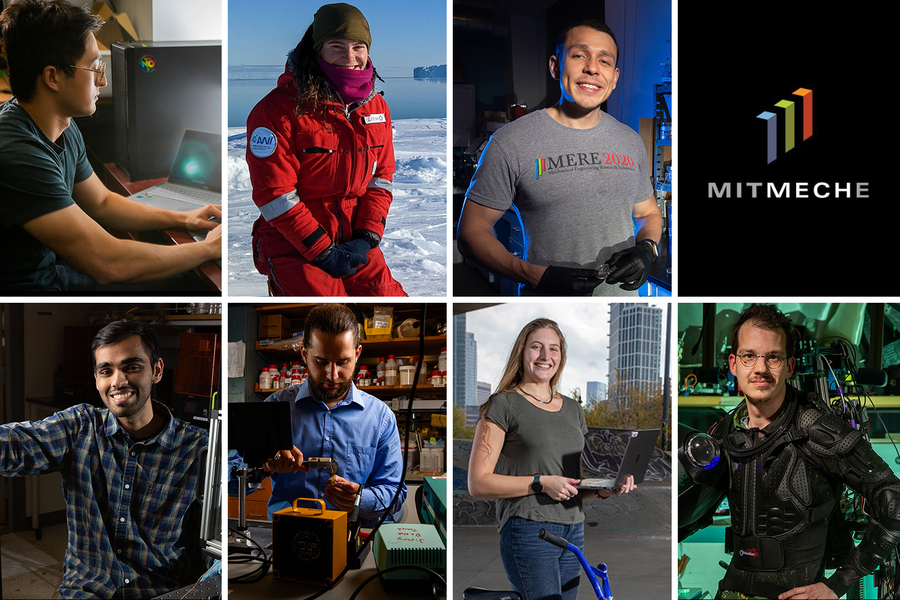
Previous image Next image
From cutting-edge robotics, design, and bioengineering to sustainable energy solutions, ocean engineering, nanotechnology, and innovative materials science, MechE students and their advisors are doing incredibly innovative work. The graduate students highlighted here represent a snapshot of the great work in progress this spring across the Department of Mechanical Engineering, and demonstrate the ways the future of this field is as limitless as the imaginations of its practitioners.
Democratizing design through AI
Lyle Regenwetter Hometown: Champaign, Illinois Advisor: Assistant Professor Faez Ahmed Interests: Food, climbing, skiing, soccer, tennis, cooking
Lyle Regenwetter finds excitement in the prospect of generative AI to "democratize" design and enable inexperienced designers to tackle complex design problems. His research explores new training methods through which generative AI models can be taught to implicitly obey design constraints and synthesize higher-performing designs. Knowing that prospective designers often have an intimate knowledge of the needs of users, but may otherwise lack the technical training to create solutions, Regenwetter also develops human-AI collaborative tools that allow AI models to interact and support designers in popular CAD software and real design problems.
Solving a whale of a problem
Loïcka Baille Hometown: L’Escale, France Advisor: Daniel Zitterbart Interests: Being outdoors — scuba diving, spelunking, or climbing. Sailing on the Charles River, martial arts classes, and playing volleyball
Loïcka Baille’s research focuses on developing remote sensing technologies to study and protect marine life. Her main project revolves around improving onboard whale detection technology to prevent vessel strikes, with a special focus on protecting North Atlantic right whales. Baille is also involved in an ongoing study of Emperor penguins. Her team visits Antarctica annually to tag penguins and gather data to enhance their understanding of penguin population dynamics and draw conclusions regarding the overall health of the ecosystem.
Water, water anywhere
Carlos Díaz-Marín Hometown: San José, Costa Rica Advisor: Professor Gang Chen | Former Advisor: Professor Evelyn Wang Interests: New England hiking, biking, and dancing
Carlos Díaz-Marín designs and synthesizes inexpensive salt-polymer materials that can capture large amounts of humidity from the air. He aims to change the way we generate potable water from the air, even in arid conditions. In addition to water generation, these salt-polymer materials can also be used as thermal batteries, capable of storing and reusing heat. Beyond the scientific applications, Díaz-Marín is excited to continue doing research that can have big social impacts, and that finds and explains new physical phenomena. As a LatinX person, Díaz-Marín is also driven to help increase diversity in STEM.
Scalable fabrication of nano-architected materials
Somayajulu Dhulipala Hometown: Hyderabad, India Advisor: Assistant Professor Carlos Portela Interests: Space exploration, taekwondo, meditation.
Somayajulu Dhulipala works on developing lightweight materials with tunable mechanical properties. He is currently working on methods for the scalable fabrication of nano-architected materials and predicting their mechanical properties. The ability to fine-tune the mechanical properties of specific materials brings versatility and adaptability, making these materials suitable for a wide range of applications across multiple industries. While the research applications are quite diverse, Dhulipala is passionate about making space habitable for humanity, a crucial step toward becoming a spacefaring civilization.
Ingestible health-care devices
Jimmy McRae Hometown: Woburn, Massachusetts Advisor: Associate Professor Giovani Traverso Interests: Anything basketball-related: playing, watching, going to games, organizing hometown tournaments
Jimmy McRae aims to drastically improve diagnostic and therapeutic capabilities through noninvasive health-care technologies. His research focuses on leveraging materials, mechanics, embedded systems, and microfabrication to develop novel ingestible electronic and mechatronic devices. This ranges from ingestible electroceutical capsules that modulate hunger-regulating hormones to devices capable of continuous ultralong monitoring and remotely triggerable actuations from within the stomach. The principles that guide McRae’s work to develop devices that function in extreme environments can be applied far beyond the gastrointestinal tract, with applications for outer space, the ocean, and more.
Freestyle BMX meets machine learning
Eva Nates Hometown: Narberth, Pennsylvania Advisor: Professor Peko Hosoi Interests: Rowing, running, biking, hiking, baking
Eva Nates is working with the Australian Cycling Team to create a tool to classify Bicycle Motocross Freestyle (BMX FS) tricks. She uses a singular value decomposition method to conduct a principal component analysis of the time-dependent point-tracking data of an athlete and their bike during a run to classify each trick. The 2024 Olympic team hopes to incorporate this tool in their training workflow, and Nates worked alongside the team at their facilities on the Gold Coast of Australia during MIT’s Independent Activities Period in January.
Augmenting Astronauts with Wearable Limbs
Erik Ballesteros Hometown: Spring, Texas Advisor: Professor Harry Asada Interests: Cosplay, Star Wars, Lego bricks
Erik Ballesteros’s research seeks to support astronauts who are conducting planetary extravehicular activities through the use of supernumerary robotic limbs (SuperLimbs). His work is tailored toward design and control manifestation to assist astronauts with post-fall recovery, human-leader/robot-follower quadruped locomotion, and coordinated manipulation between the SuperLimbs and the astronaut to perform tasks like excavation and sample handling.
This article appeared in the Spring 2024 edition of the Department of Mechanical Engineering's magazine, MechE Connects .
Share this news article on:
Related links.
- Department of Mechanical Engineering
Related Topics
- Mechanical engineering
- Graduate, postdoctoral
- Artificial intelligence
- Human-computer interaction
- Oceanography and ocean engineering
- Nanoscience and nanotechnology
- Health sciences and technology
- Sports analytics
- Spaceflight
- Independent Activities Period
Related Articles
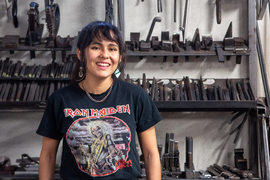
Forging her own path
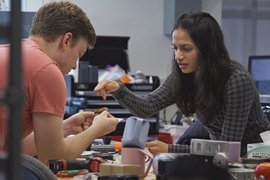
Mechanical engineering with a twist: Pursuing a passion for robotics with customized major

Crystan McLymore SM ’23: Exceling at sea and in the lab
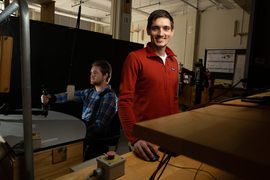
Learning challenges shape a mechanical engineer’s path
Previous item Next item
More MIT News

Four from MIT named 2024 Knight-Hennessy Scholars
Read full story →
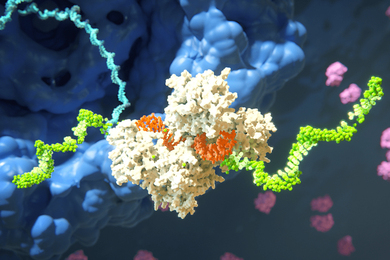
Taking RNAi from interesting science to impactful new treatments
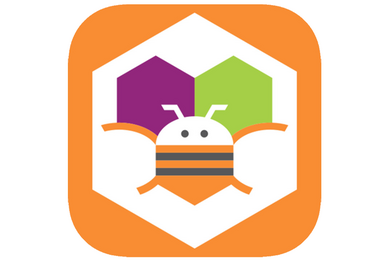
The power of App Inventor: Democratizing possibilities for mobile applications
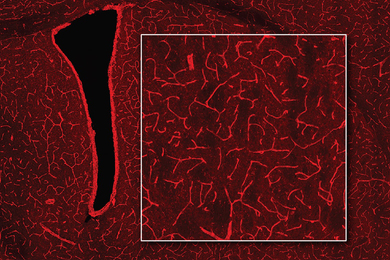
Using MRI, engineers have found a way to detect light deep in the brain
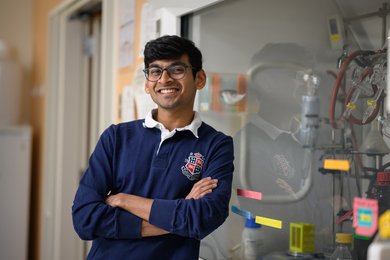
From steel engineering to ovarian tumor research
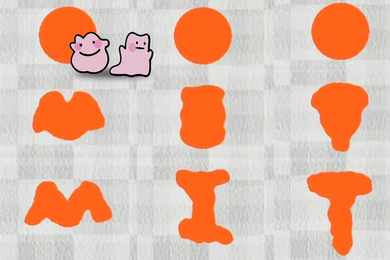
A better way to control shape-shifting soft robots
- More news on MIT News homepage →
Massachusetts Institute of Technology 77 Massachusetts Avenue, Cambridge, MA, USA
- Map (opens in new window)
- Events (opens in new window)
- People (opens in new window)
- Careers (opens in new window)
- Accessibility
- Social Media Hub
- MIT on Facebook
- MIT on YouTube
- MIT on Instagram

IMAGES
VIDEO
COMMENTS
1.4 Case Study Findings 17 1.5 Decision Making and Actions 18 1.5.1 Value 18 1.5.2 Decision Making and Actions - Alternatives 19 1.5.3 Decision Making and Actions - Making a Plan 20 1.6 Closure 20 1.7 Symbols and Abbreviations 21 1.8 Answer Key 21 References 24 Case 2 Risk / Reward Evaluation 26 2.1 Case Study 28
In summary, every case study shows different problems that mechanical engineers have to deal with. For example, fixing the Hubble Space Telescope needed very accurate work, and getting the Mars Rover to move on Mars took a lot of creativity. The fall of the Tacoma Narrows Bridge and the nuclear accident at Fukushima Daiichi teach us that strong ...
Top 150 Mechanical Engineering Research Topics [Updated] General / By Stat Analytica / 10th February 2024. Mechanical engineering is an intriguing discipline that holds significant sway in shaping our world. With a focus on crafting inventive machinery and fostering sustainable energy initiatives, mechanical engineers stand as pioneers in ...
Sample work report topics. Mechanical Engineering. Stress analysis of prismatic members in axial, shearing, torsional and flexural deformations. Force analysis of structures and structural components. Hydrostatics. Flow similarity and dimensional analysis as applied to engineering problems in fluid mechanics. Thermodynamics, forensics based.
Welcome to the Mechanical Engineering Case Studies website. Select your course from the list at the Left to begin. This web site is being developed to give undergraduate Mechanical Engineering students real engineering examples and experimental data in their lecture courses. This is done by using design calculations or experimental data ...
A "case studies" web site has been developed to provide undergraduate Mechanical Engineering students the opportunity to analyze actual engineering systems with real experimental data within their lecture courses. These case studies are based on design calculations or are developed from experimental data obtained by ME seniors within their ...
The Dalsa Harmony Camera Body Part Design case study was developed in 2013 and intended for use in Mechanical Engineering and System Design courses covering topics such as design, manufacturing and heat transfer. The scope and specific topics covered by the case study are broader than the base material taught in the targeted courses.
Case studies in mechanical engineering : decision making, thermodynamics, fluid mechanics and heat transfer. Responsibility Stuart Sabol. ... 3-8 3.1.3 Linear Programming 3-9 3.1.4 New Methods New Thinking 3-9 3.1.5 Presenting Results 3-11 3.2 Case Study Results / Closure 3-11 3.3 Symbols: 3-13 3.4 Attachments 3-14 Case 4 Flow Instrument ...
Using a case study approach, this reference tests the reader's ability to apply engineering fundamentals to real-world examples and receive constructive feedback Case Studies in Mechanical Engineering provides real life examples of the application of engineering fundamentals. They relate to real equipment, real people and real decisions. They influence careers, projects, companies, and ...
Summary. This case study focuses on conceptual design, front-end engineering and design (FEED), and engineer, procure construct (EPC). The case study addresses the conceptual design phase including chemical, biological, and mechanical process design. The process conceptual design includes process basis of design (BOD), block flow diagrams ...
This paper presents a case study in the preparation and presentation of engineering graduate and undergraduate courses in a completely online format. The mechanical engineering courses listed in Table 1 were taught as fully online courses at The University of Texas at Tyler. These courses represent one core class at the undergraduate level and ...
Let's delve into some intriguing case studies that showcase the invaluable lessons learned through failure analysis and subsequent redesigns. 1. Turbocharger Troubles: One case study revolves ...
Bachelor of Science in Mechanical Engineering. As new concepts and technologies emerge, researchers in mechanical engineering have focused on various areas of study. This thesis seeks to understand the evolution of research topics over time and identify which subjects have been favored at different points.
Emerging Trends in Mechanical Engineering. 21 Feb. From tiny, tooth-scrubbing robots 1 to rockets capable of deep space exploration, 2 the field of mechanical engineering is on the cutting edge of new technologies. These exciting advancements are both powered by and driving mechanical engineering. If you want to stay relevant in this fast-paced ...
Case studies on ethical issues for mechanical engineers. A recently promoted manager at an industrial engineering company discovers that factory workers are asked to work more than eight hours a day without getting paid overtime.
Engineering Mechanics is a 20 credit (10 ECTS) class which is delivered in two hour sessions twice a week over two semesters (a total of 96 hours). As well as this students are expected to spend 32 hours on assignments and 72 hours engaged in private study. Four tutors are assigned to this class the year being broken into two cohorts: one of ...
Pursuing Engineering Ethics through Real-World Case Studies provides in-depth analysis with extended discussions and study questions of case studies that are based on real work situations. Organized by the canons of the ASCE Code of Ethics, this book is intended for practitioners, consultants, government engineers, engineering educators, and ...
Spiral binding punching machine - Diploma Mechanical Projects. Mechanical Project on Auto Turning Fuel Valve -Report Download. Design and analysis Of Crane Hook -Mechanical CAD/CAM Project. Paper bag making machine Latest 2019 Mechanical Project. Withworth Quick Return mechanism Operated Conveyor- Mechanical Project.
The engineering ethics cases in this series were written by Santa Clara University School of Engineering students Clare Bartlett, Nabilah Deen, and Jocelyn Tan, who worked as Hackworth Engineering Ethics Fellows at the Markkula Center for Applied Ethics over the course of the 2014-2015 academic year. In order to write these cases, the fellows ...
School of Mechanical Engineering, Purdue University, 585 Purdue Mall, West Lafayette, IN 47907-2088; telephone: (+ 1) 765.494.9342; fax: (+1) ... conceptual change, and their motivation to learn. Despite the popularity of the case study approach within engineering, the empirical research on the effectiveness of case studies is limited and the ...
Therefore, the majority of case study topics already include some challenge or an assumption that requires additional research. ... Condensed Matter and Mechanical Engineering studies. The most common misconceptions about Nanoscience. The Green Energy systems in the domestic environment.
Product design and manufacturing leverage 3D scanning for various applications. This study aims to investigate the effectiveness of 3D scanning in furniture production by surveying the literature and showcasing four real-world case studies. The literature review reveals that 3D data acquired from real-world objects have applications in research, rapid prototyping, restoration, and preservation ...
Loïcka Baille's research focuses on developing remote sensing technologies to study and protect marine life. Her main project revolves around improving onboard whale detection technology to prevent vessel strikes, with a special focus on protecting North Atlantic right whales. Baille is also involved in an ongoing study of Emperor penguins.
Acidified CO2 fracturing is a viable method for increasing production in deep, tight sandstone reservoirs. However, the potential mechanism of changes in pore structure and mechanical properties of sandstone under acidified CO2 supercritical composite is not clear. Understanding this mechanism is important for the study of crack initiation and extension in tight sandstone reservoirs.
Introduction. In the post Microsoft Fabric: Integration with ADO Repos and Deployment Pipelines - A Power BI Case Study. we have outlined key best practices for utilizing the seamless integration between Fabric and GIT via Azure DevOps repositories and the use of Fabric Deployment Pipelines, both features intended to improve collaborative development and agile application publishing in the ...